
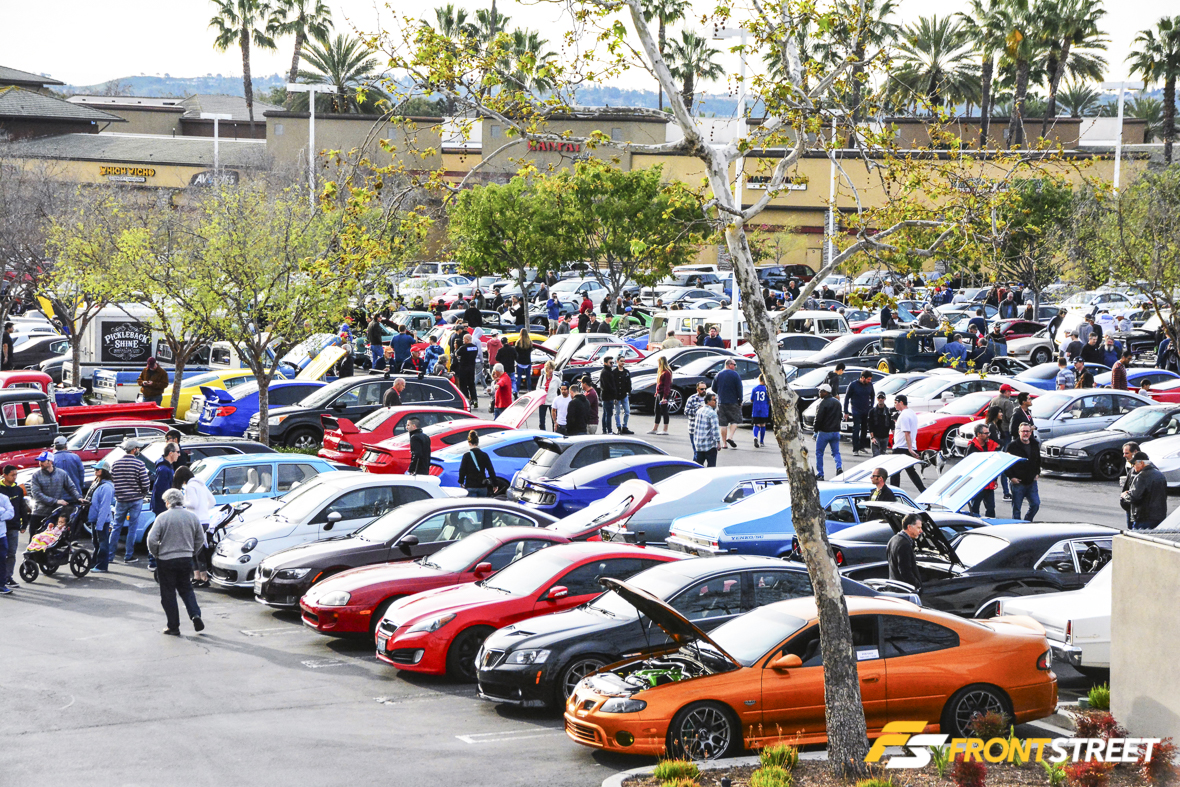
All over the country, Cars & Coffee meets – not planned car shows – have taken both the import and domestic enthusiast scenes by storm. The sheer number of attendees and spectators coming out to these free car enthusiast meets have grown what appears to be ten-fold in comparison to your typical car show. Perhaps it’s the lure of not having to check-in with your car at a specific call time. Maybe it’s the idea of not being forced to sit hostage next to your ride for hours at a time until the event closes. Put those two concepts together, add rare and unique vehicles along with owners who want to show them off, and I can see exactly why these events have become such a hit; I’ve made it a habit of attending them wherever and whenever I can, and I’m often rewarded with the chance to see vehicles I’d never see otherwise.
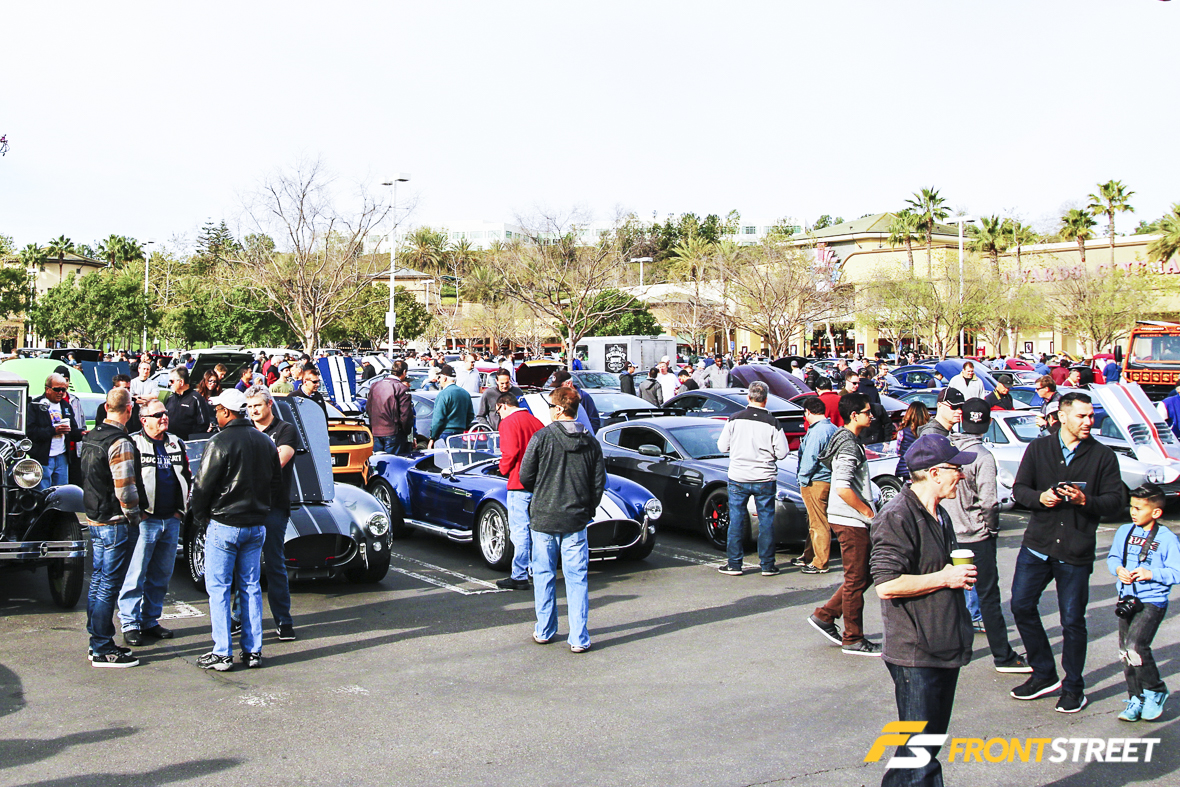
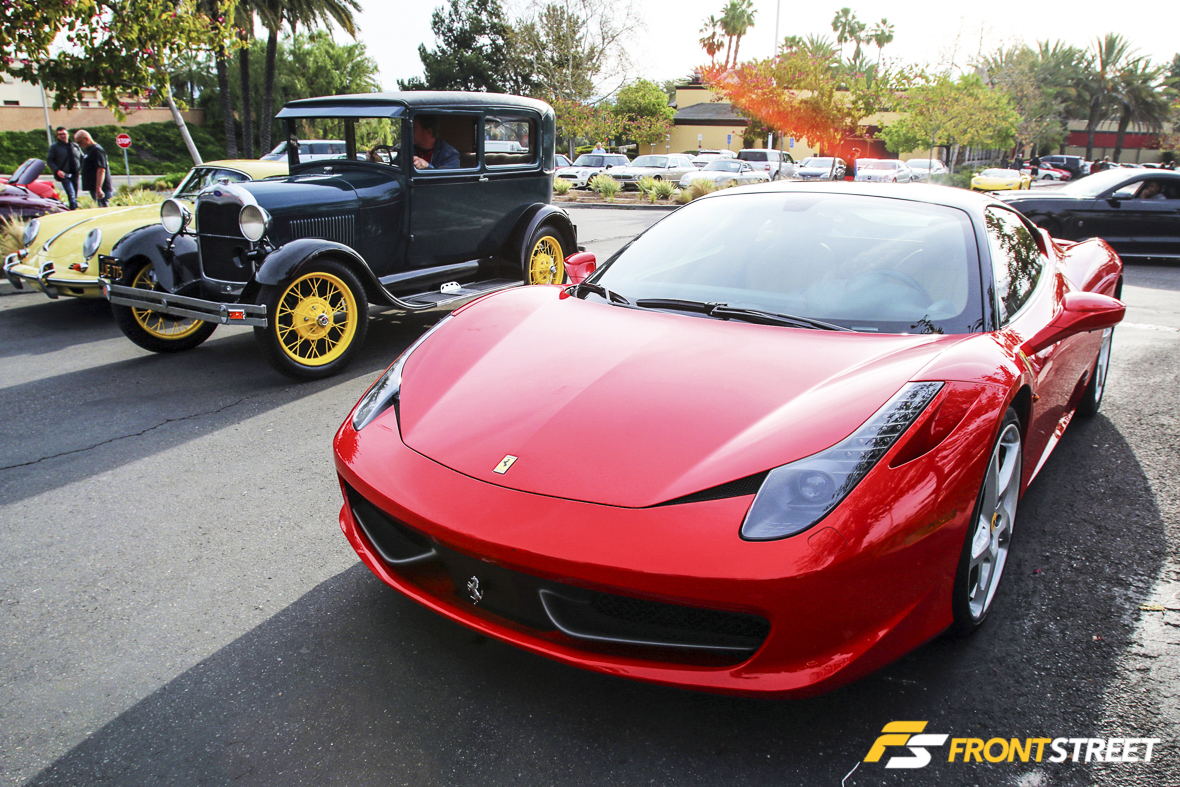
Every Saturday morning – from 7:00am to 9:00am – Cars and Coffee in Aliso Viejo, California, becomes a melting pot for automotive enthusiasts that love getting together to share a hot cup of joe and show off their rides. If there is ideal weather, a wide variety of cars from exotics to classics and late-model American muscle show up, with an estimated 500-600 cars on display and somewhere in the neighborhood of 1,000 spectators wander the aisles.
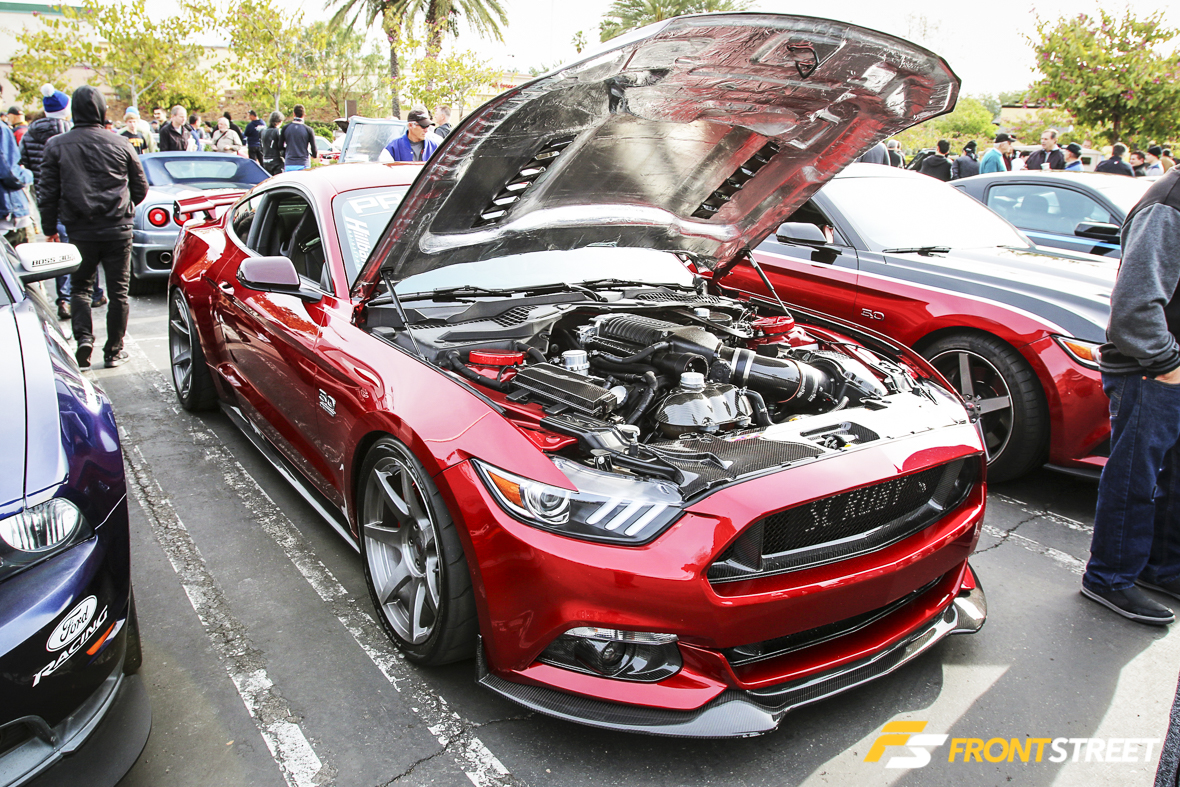
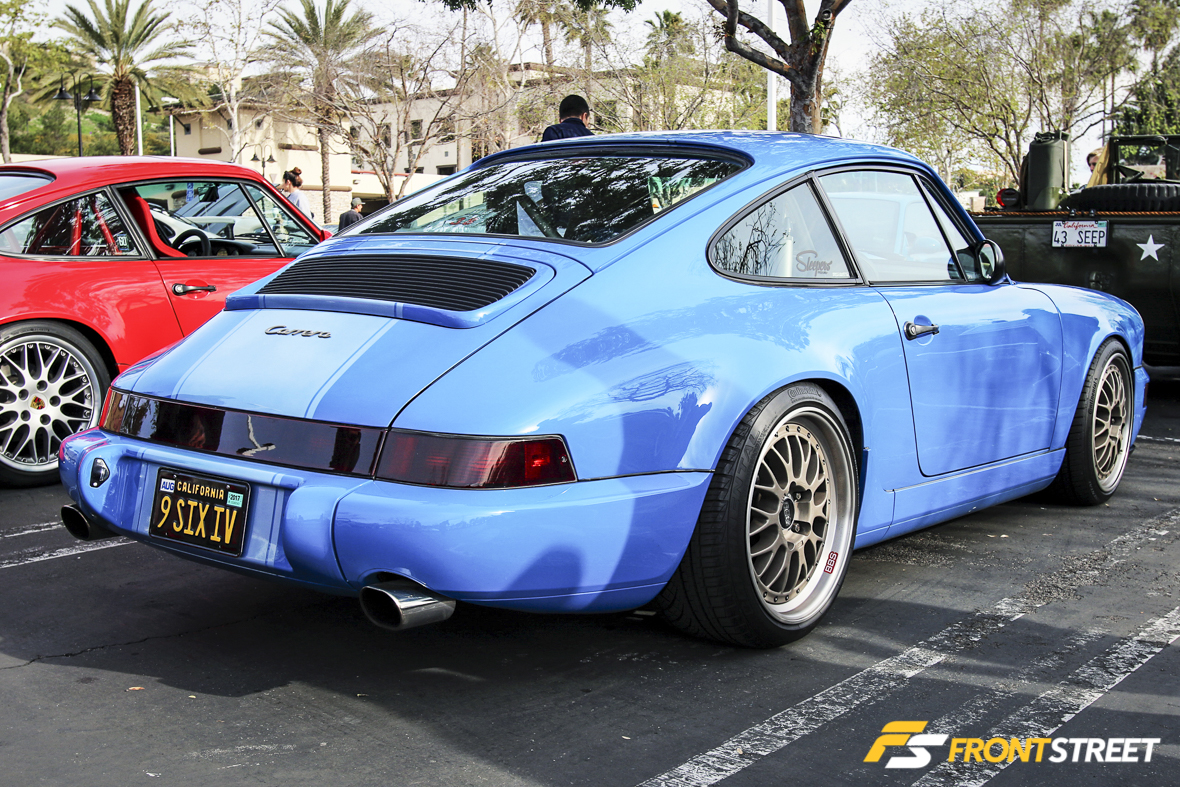
When Cars & Coffee Irvine abruptly ended in 2014, it left a major hole in Southern California’s car culture. In February of 2015, Aliso Viejo Councilman Mike Munzing was prompted to see about moving the event to his town.
“Mike knew of my experience with Irvine Cars & Coffee and, prior to that Crystal Cove, so he invited me to attend a meeting with seven other gentlemen,” says Scott White, one of the enthusiasts who has been instrumental in making the Cars & Coffee Aliso Viejo event a reality.
“He asked three of the founders of Crystal Cove and Irvine, along with the man who engineered the commercial layout of Aliso (and a Cobra-owning enthusiast), the GM of Crevier Classics, the GM of the Lew Webb Museum, and myself to join him for a round-table meeting. This ‘gang of 8’ laid out the vision of Cars & Coffee AV, the start date, the PR plan and the structure in less than 2 hours.”
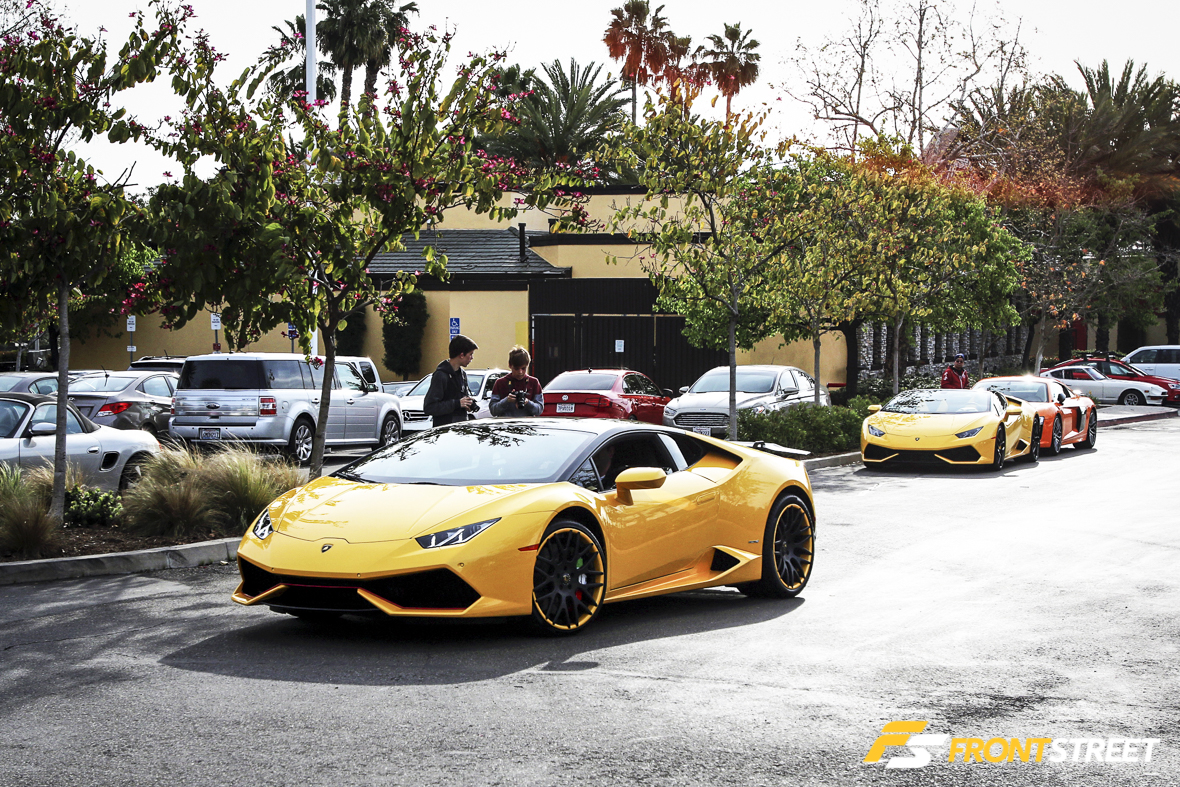
The following Saturday, February 14, 2015, the Aliso Viejo crew quietly launched the first meet-up through word-of-mouth, with about 100 cars showing up to take part in the festivities. The event was intentionally kept under wraps, so to speak, for one main reason – they didn’t want to create a formal organization for this event. Ford Motor Company was spending $40,000 per year for police and permits at the former Irvine location. No one at the table was ready to spend big dollars to put on this event at Aliso Viejo, so the decision was made to let the event grow organically.
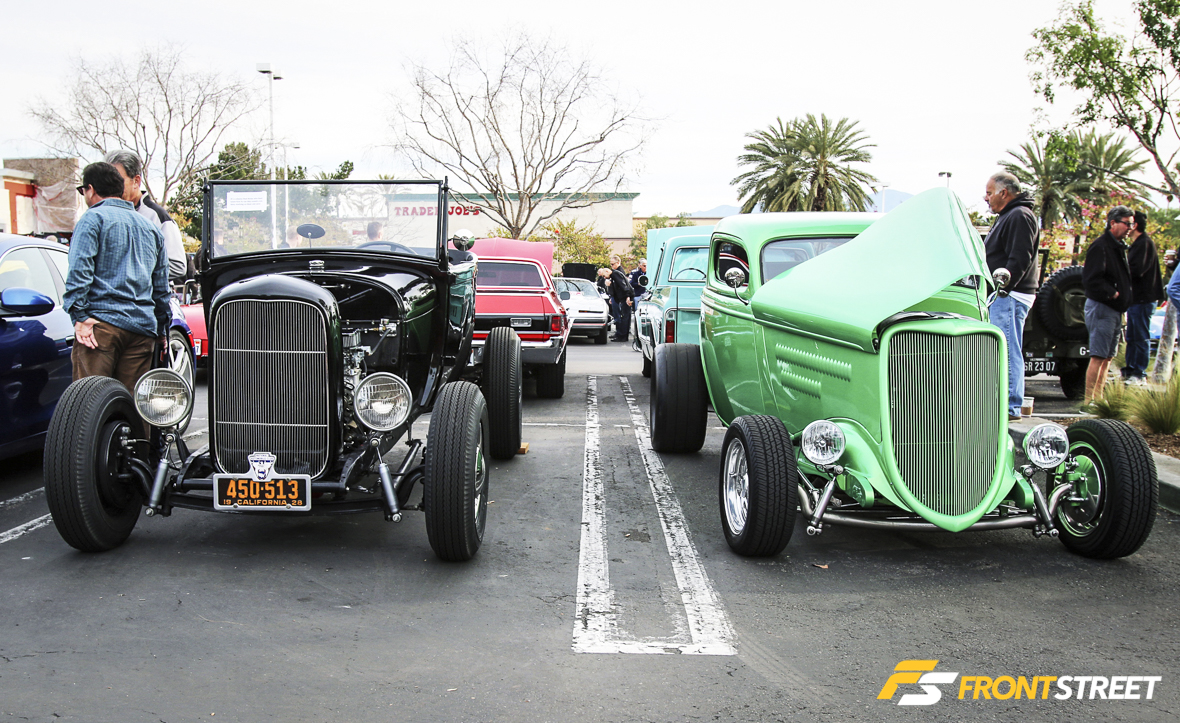
When the Irvine Cars & Coffee shut down for good, prior to the Aliso Viejo event becoming reality, several attempts to resurrect it in another location were made. Several well-meaning people tried out locations like The District, in Tustin, and The Enderle Center, a small strip mall, also in Tustin. The District kicked C&C out after just 3 weeks. The Enderle Center group still meets, primarily as a Porsche-centric event.
John Schirmer (the C&C founder of Crystal Cove and Irvine) pointed out that Irvine got out of control after the OC Register put together an article.
“Too much publicity can, and did, kill a great event. That is why we have kept a fairly low profile with Cars & Coffee Aliso Viejo,” says White.
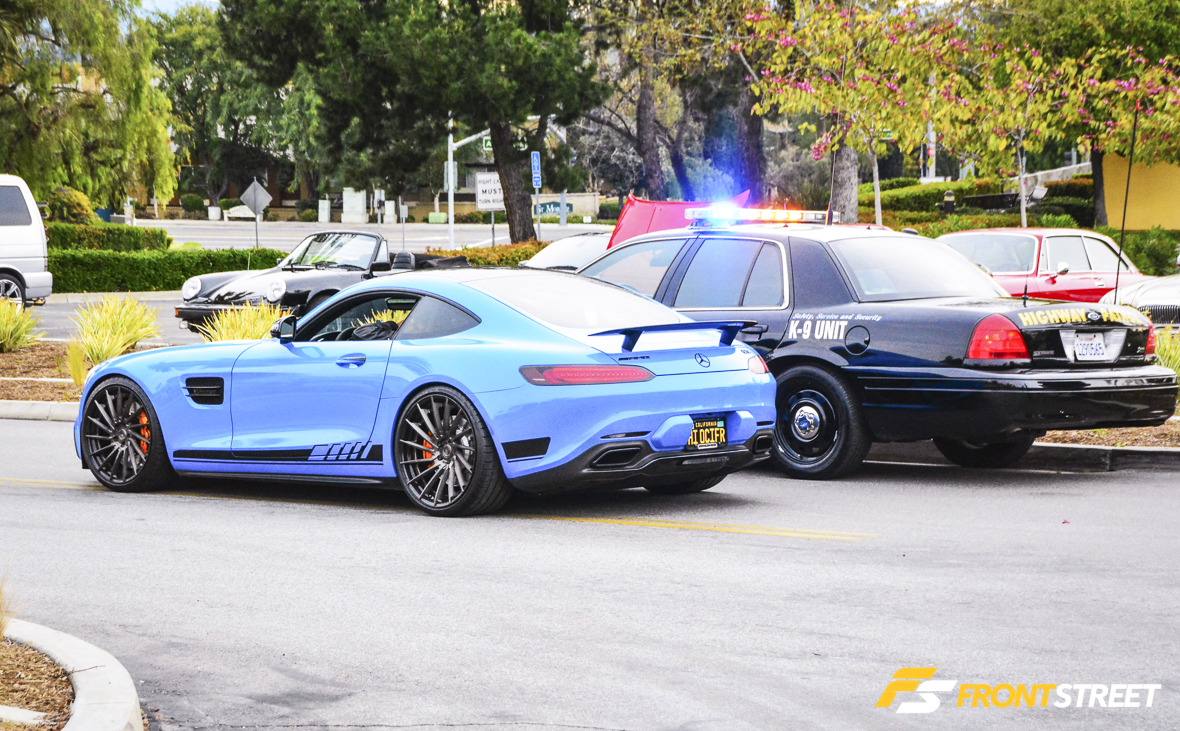
Perhaps this Mercedes-AMG GT’s license plate “HI OCIFR” rubbed this Highway Patrol man the wrong way during the meet? White says that volunteers have worked tirelessly to keep the event under control, including Richard Schnyder, who was also a volunteer at the former Irvine location.
In an effort to keep this event under control, and provide a fun and safe place to meet for years to come, the entire crew has banded together to bring trash cans, create No Parking signs for the fire lanes and even built a No Left Turn sign for one particular entrance to prevent tickets being handed out by the Orange County Sheriff. You’ve been officially warned! If you Hoon at Cars & Coffee AV, you’re itching to receive a citation by the cops and get black-flagged by staff members. It’s as simple as that!
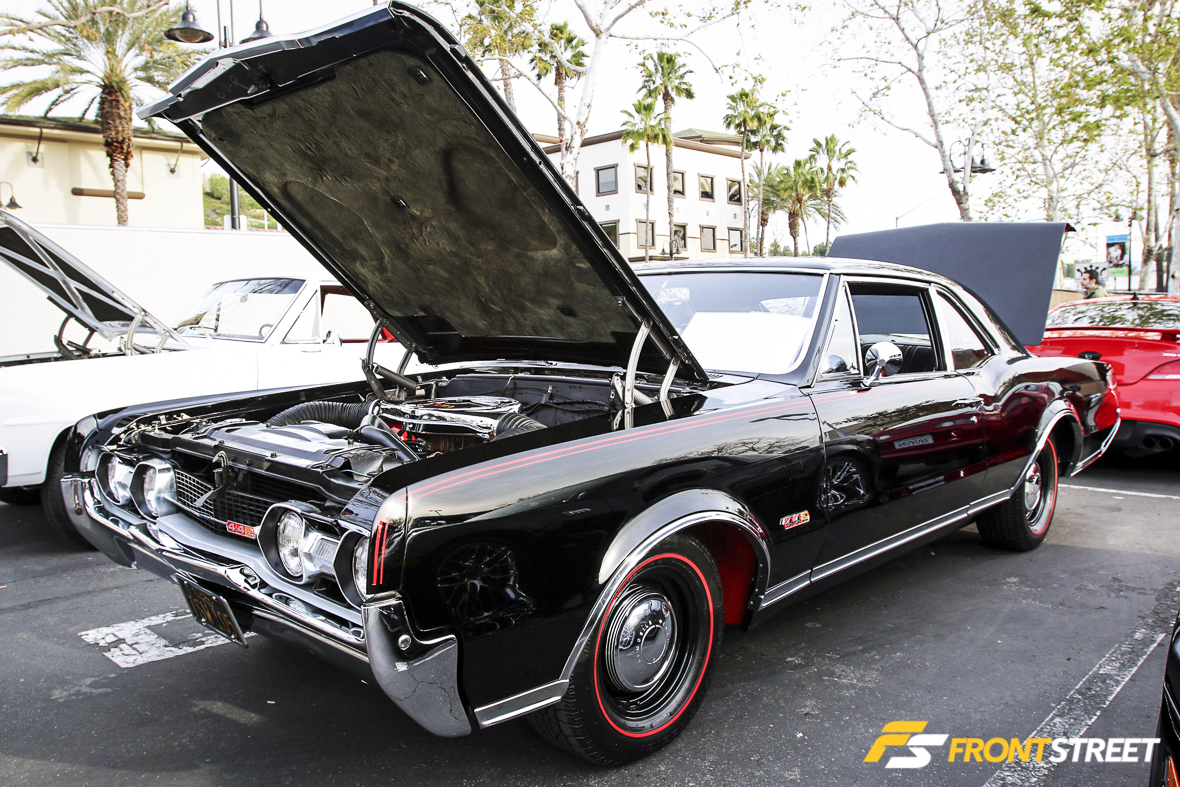
A steady stream of onlookers gathered around this ‘67 Oldsmobile throughout the morning as they recognized its rarity. With the optional W-30 package, this Olds was limited in production, as only 502 W-30 vehicles were produced in Lansing, Michigan, with approximately 100 additional W-30 option packages installed at Oldsmobile dealerships.
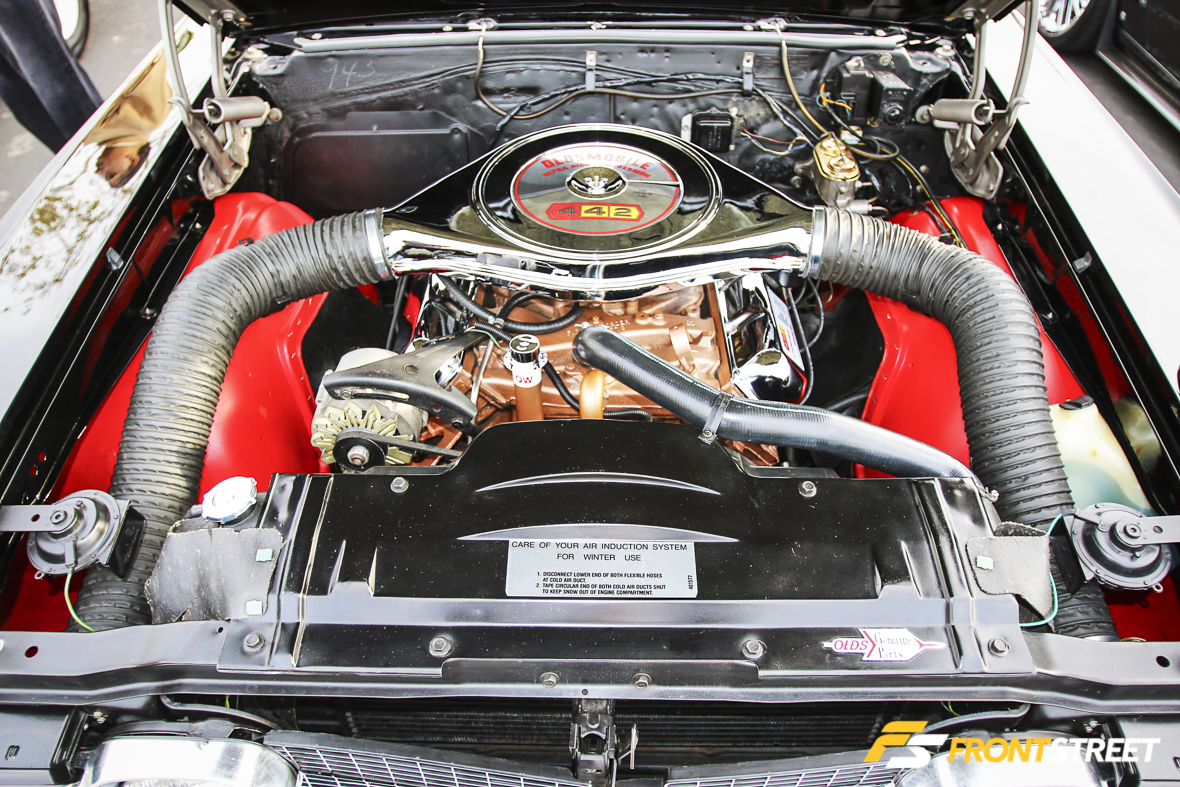
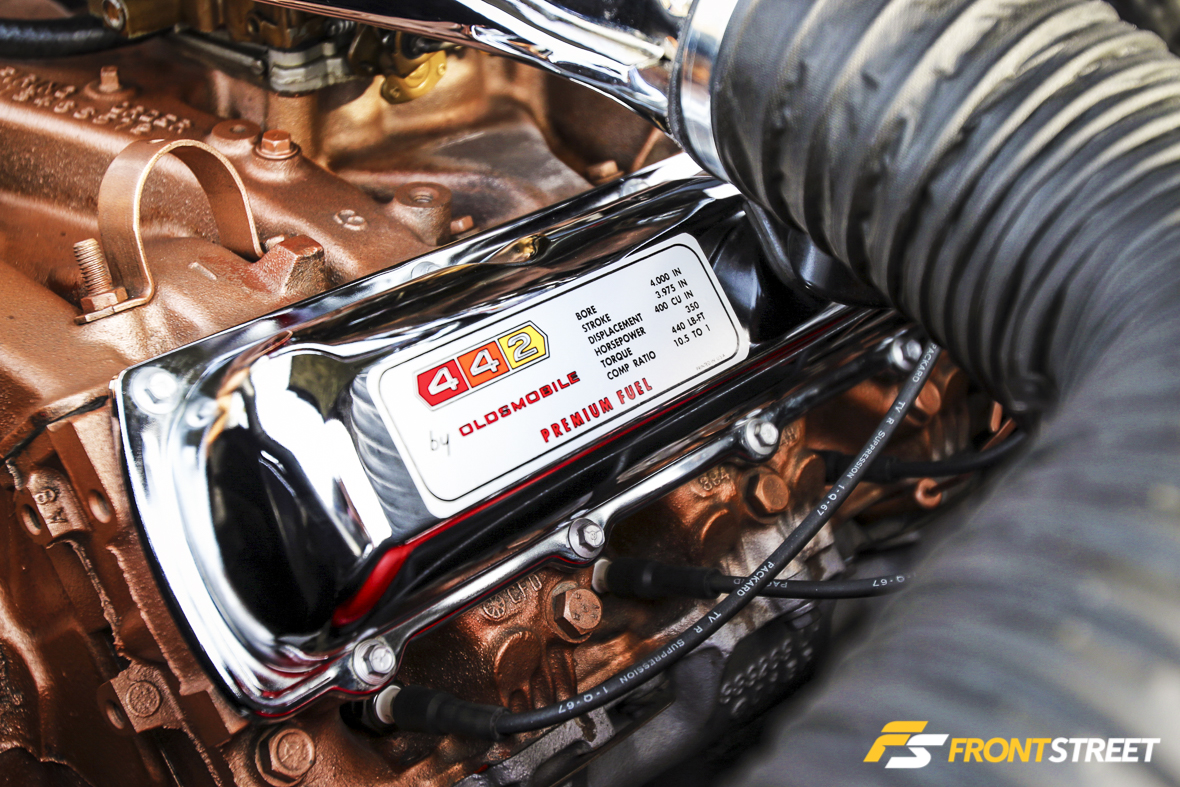
What’s so special about the W-30? These vehicles were factory-built specifically for drag racing, and came with a long list of modifications designed to help the cars perform at the track. In the engine, hotter cams, larger valves, stiff valve springs, and a recalibrated Quadrajet carburetor combined with a unique air intake located between the headlights, and mechanical advance distributor helped to pump up the power. Added frame bracing, boxed lower control arms, trunk mounted battery, horn relocated to the fenders for ram air, and a special “P” code rear posi-traction differential, continued the modification list. Here’s an interesting fact: Oldsmobile had to meet NHRA’s mandate that the vehicles must be factory-built units, and there had to be 500 examples produced for public consumption – so they built 502.
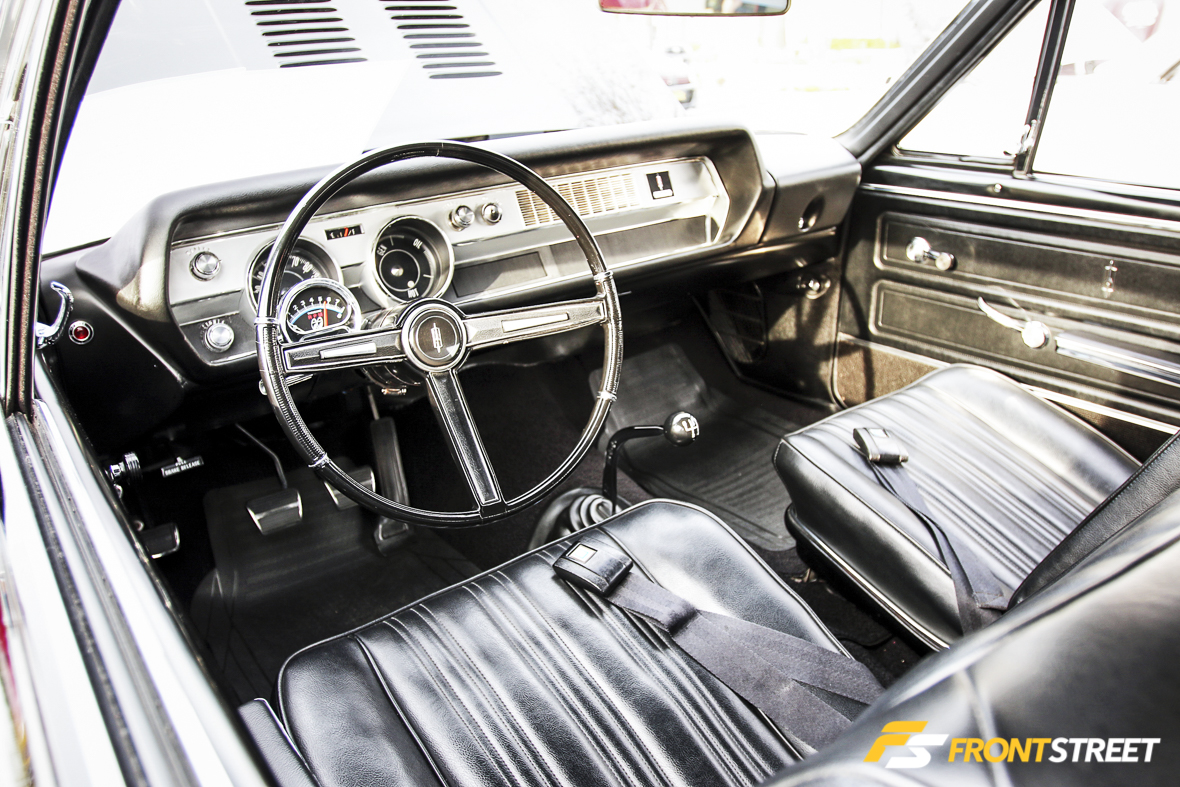
This 442 is a sports coupe “post” body, which was best for drag racing; this particular example was purchased with a radio delete, heater delete, 4-speed close-ratio Muncie transmission, a factory Hurst shifter, Positraction rearend with 3.90:1 gear ratio, manual steering, and manual drum brakes.
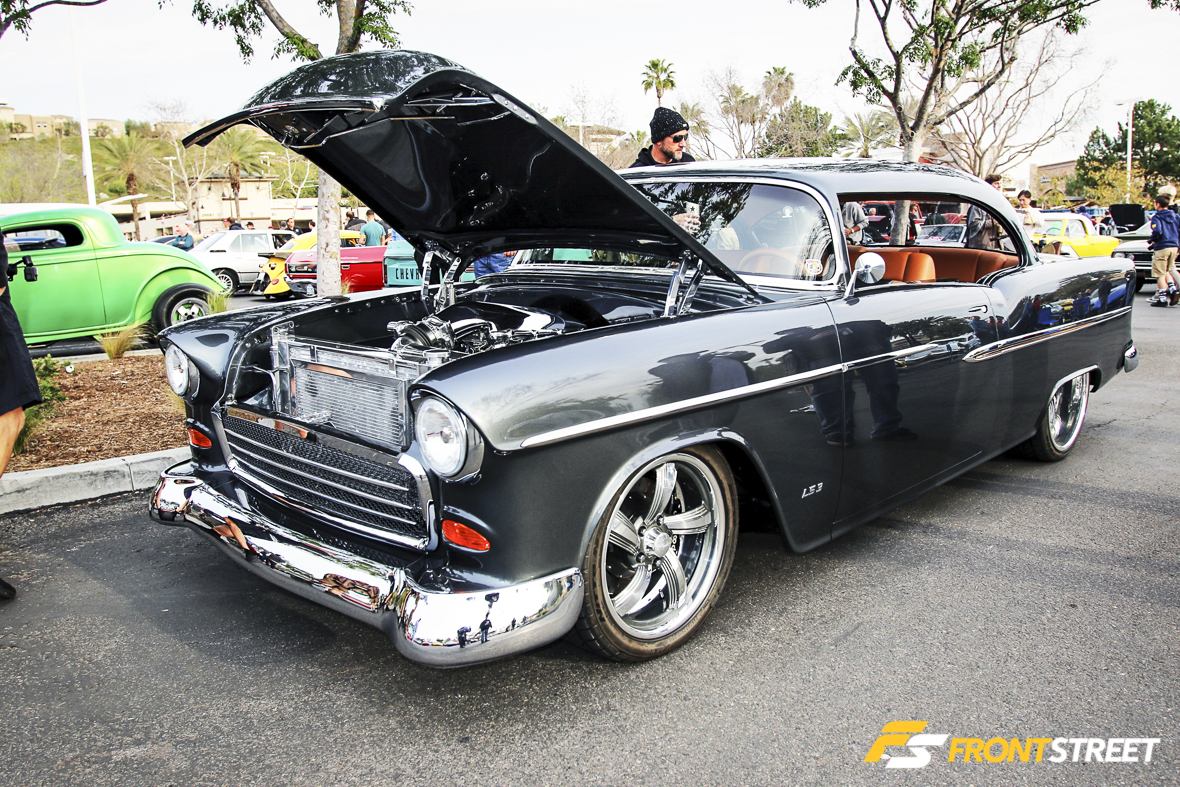
Sitting front and center in the parking lot was this pristine ’55 Chevy Bel Air hardtop. This work of art has gone through extensive modifications including massaging the body for an ultra-clean appearance.
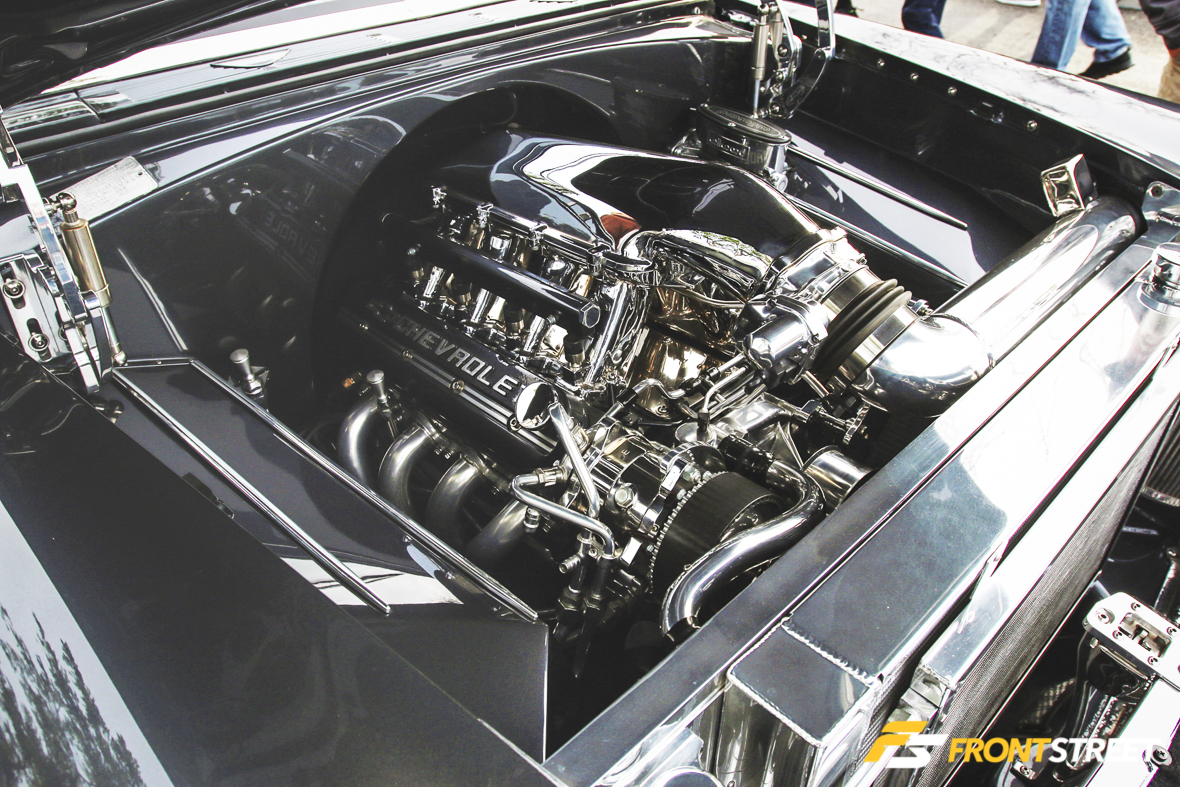
Some modern technology was prevalent within this 62 year old machine; the powerplant has been updated with an LS3 engine shoehorned into the engine bay. The entire engine was done over in chrome and was spotless.
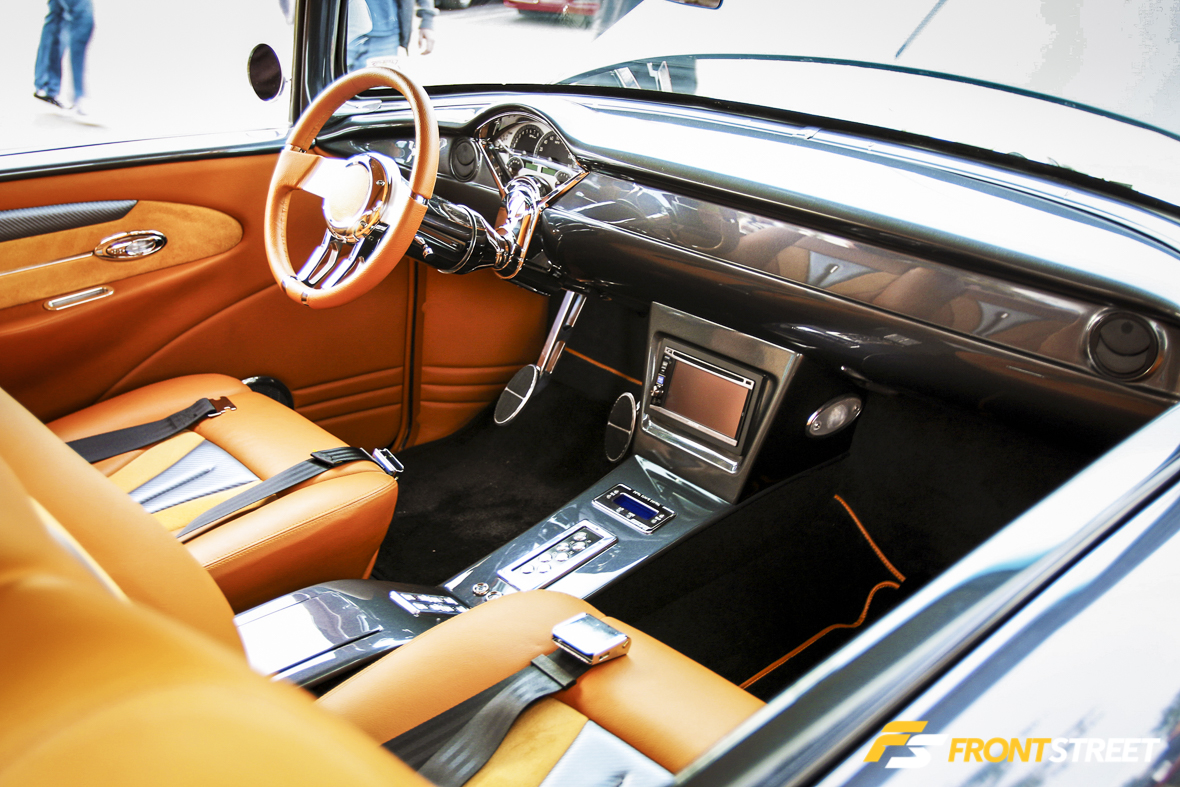
The interior was also redone using custom leather with carbon-accented door panels. It’s obvious this vehicle owner wasn’t afraid of pushing the envelope when it came to implementing new-school technology in an old-school vehicle.
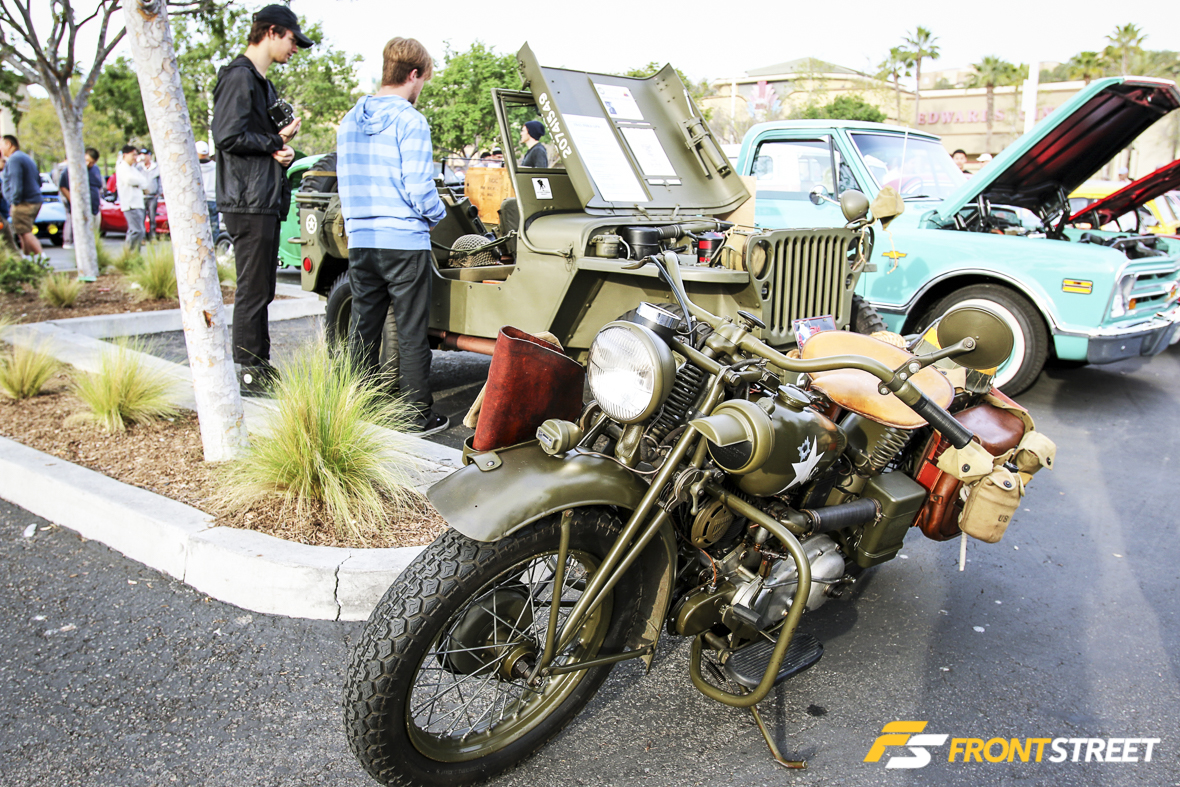
To say the variety of vehicles at this weekend’s event was extensive would be an understatement – I witnessed a number of vintage military machines to go along with the race and unique performance vehicles, including this Indian 841 motorcycle designed for World War II combat. The Indian 841 ran a factory equipped air-cooled longitudinally mounted V-twin engine.
Sitting directly behind it was a 1945 Ford GPW. This fully restored Willys displayed the markings of the 2nd Infantry Div, 9th Regiment Company G, and vehicle 1 in honor of the owner’s uncle, who landed at Omaha Beach, Normandy, France on D-Day.
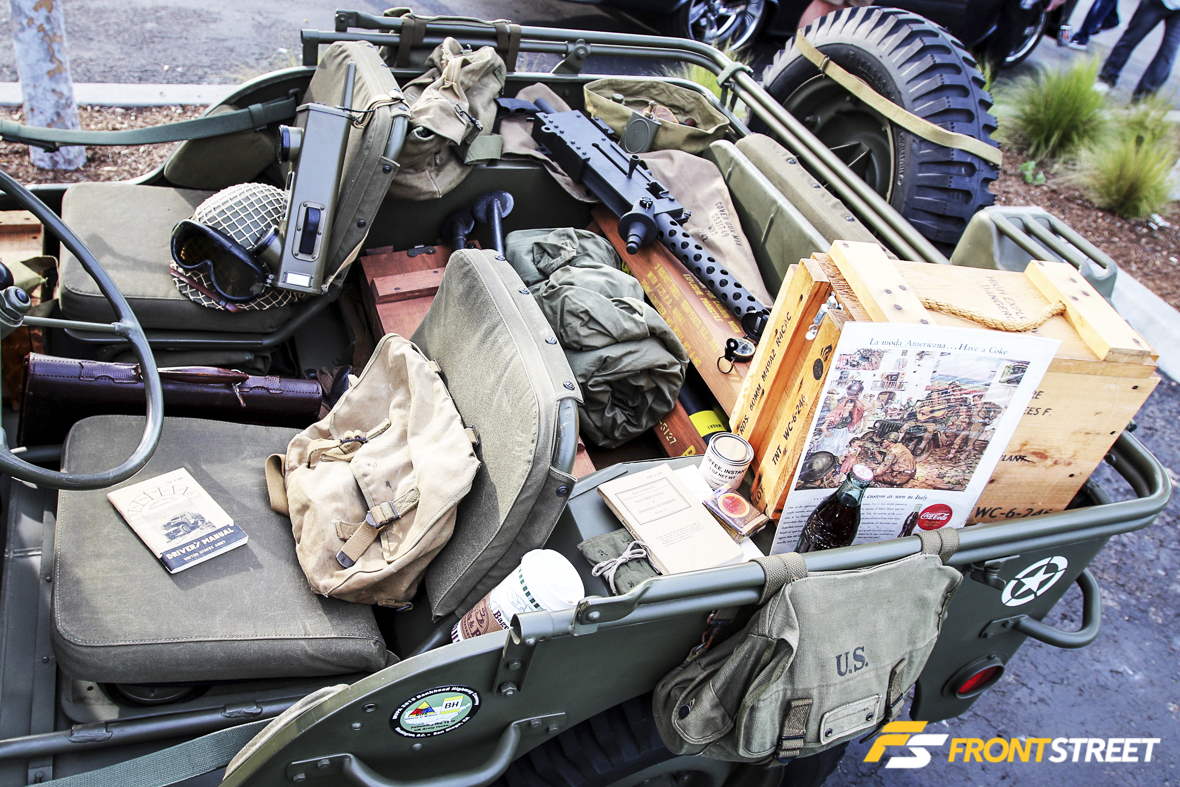
A quick glance inside the cabin took us though a time warp, as the attention to detail using numerous props gave us some insight on what soldiers had to haul around during war times.
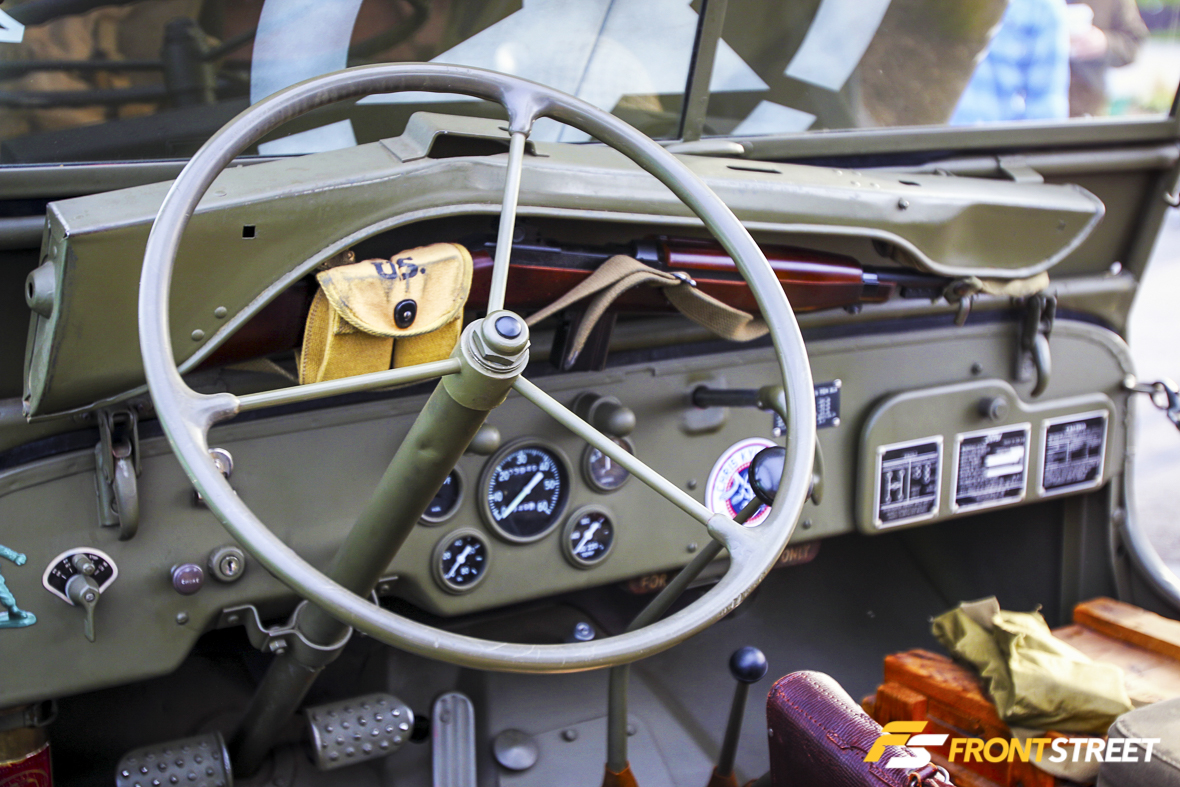
It was pretty cool that the Jeep’s dash was designed specifically to holster the government-issued M1 Carbine.
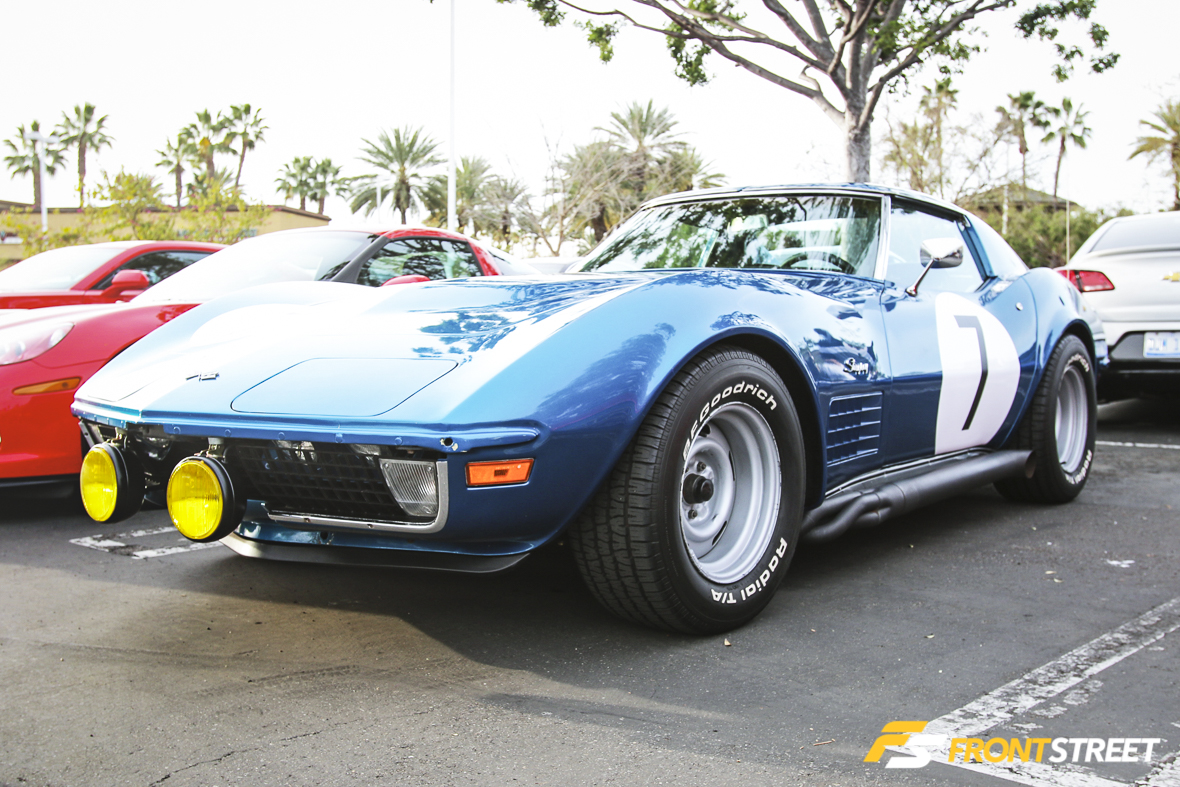
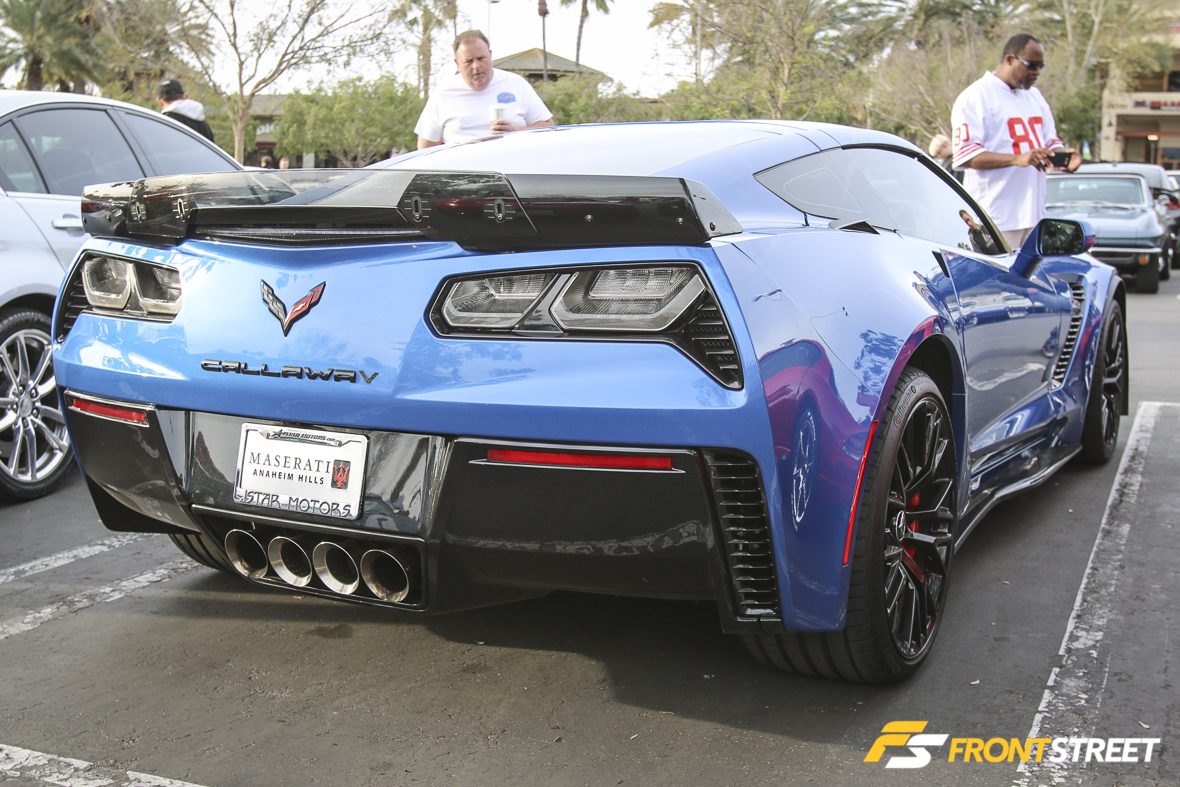
I’ve always had a thing for the Stingray ever since my uncle owned one back in the late ‘70s. This owner took a few pages from road racing cars from that era, while adding his own personal touches. He removed the chrome center caps, slapped on a set of side-exit headers and exhaust pipes, and bolted on a set of old-school fog lights. Sitting just a few cars down was this newly-acquired Callaway C7 Z06. It was interesting to see how much the Corvette has changed over the years. Although the Callaway produces 757 horsepower and 777 lb-ft of torque, call me old-fashioned – I’m still a sucker for old school.
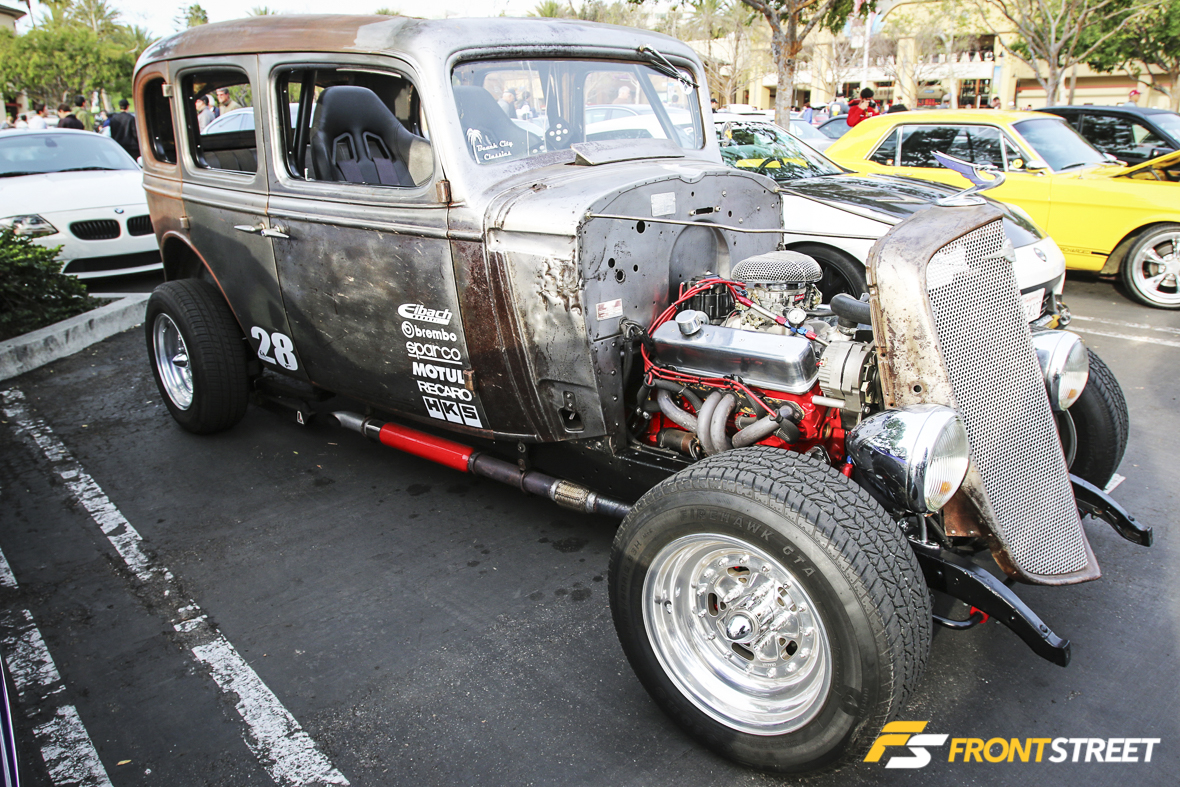
Perhaps the owner of this rat rod was heavily involved in the import car scene? The roll call of logos plastered on the side of his patina doors made me do a double take. I’m curious to know when and which HKS products were developed for this domestic. Regardless, this is a cool project I wouldn’t mind taking out for a cruise on the weekend.
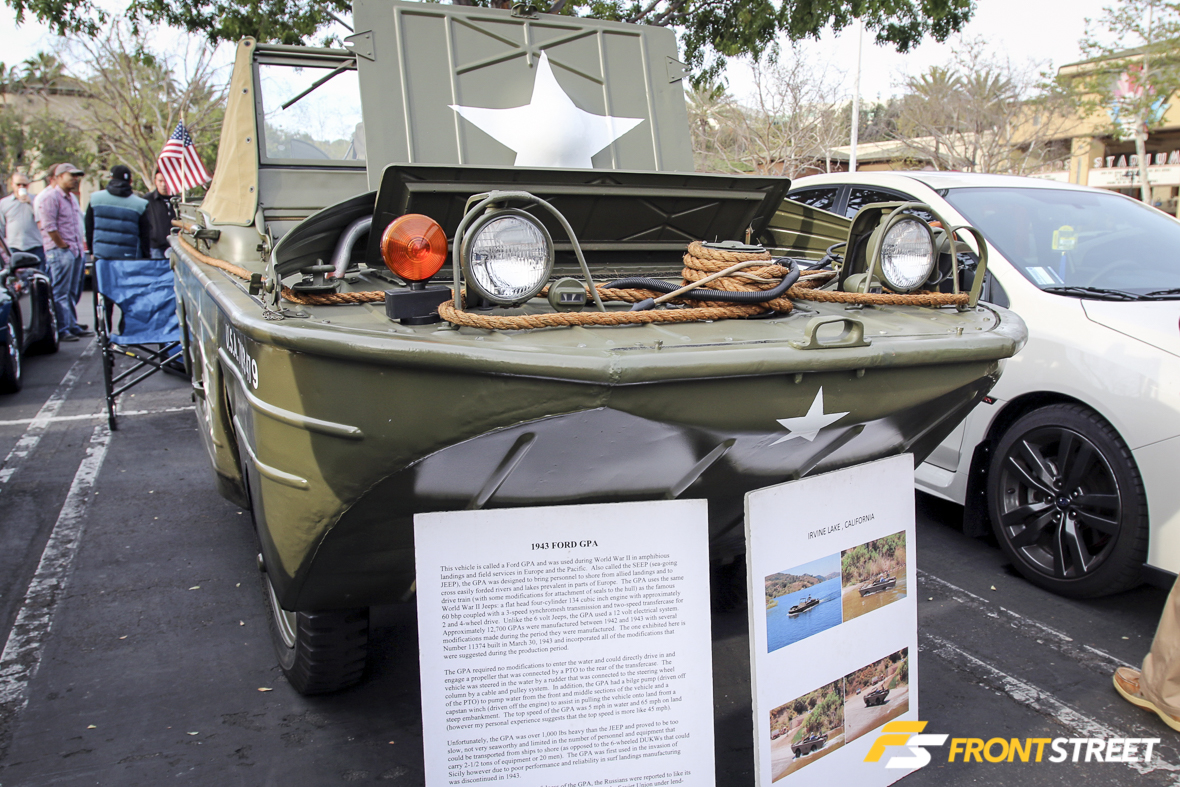
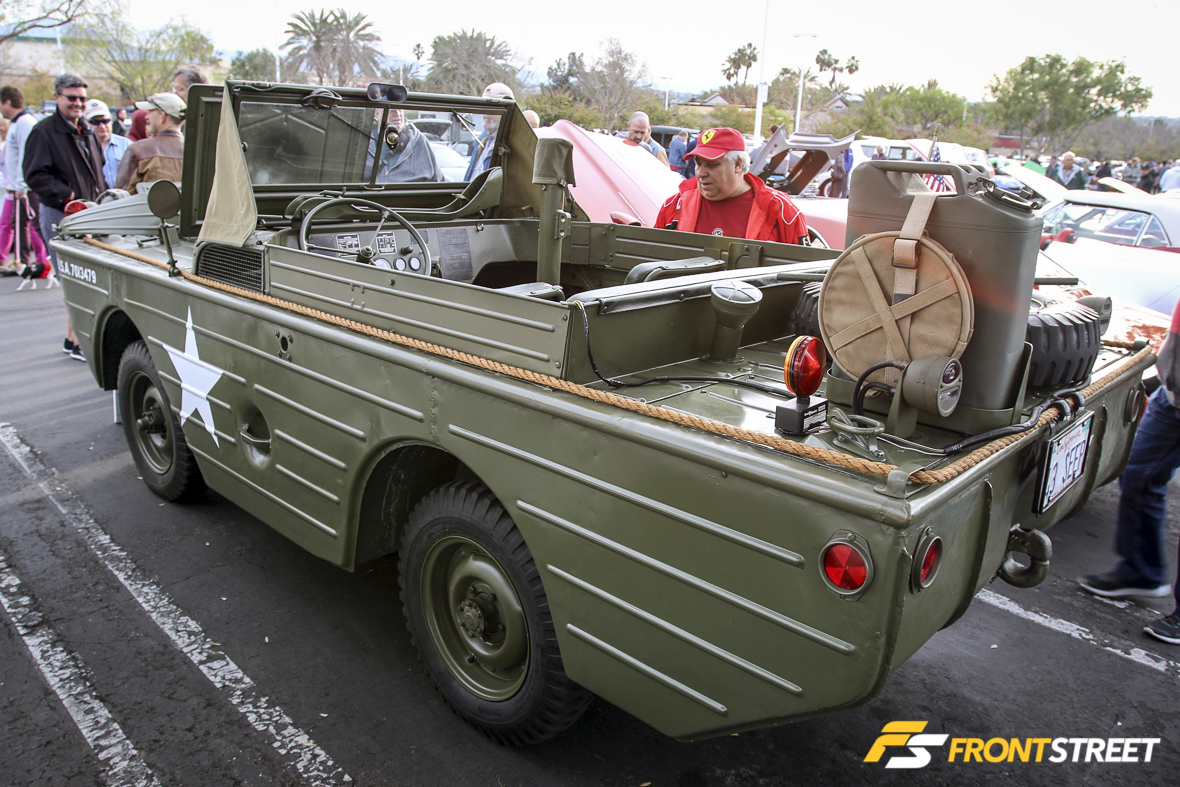
The owner of this Ford GPA also paid homage to the military. The GPA was used during WWII in amphibious landings and field services in Europe and the Pacific. Also known as the SEEP (sea-going Jeep), this GPA was built on March 30, 1943.
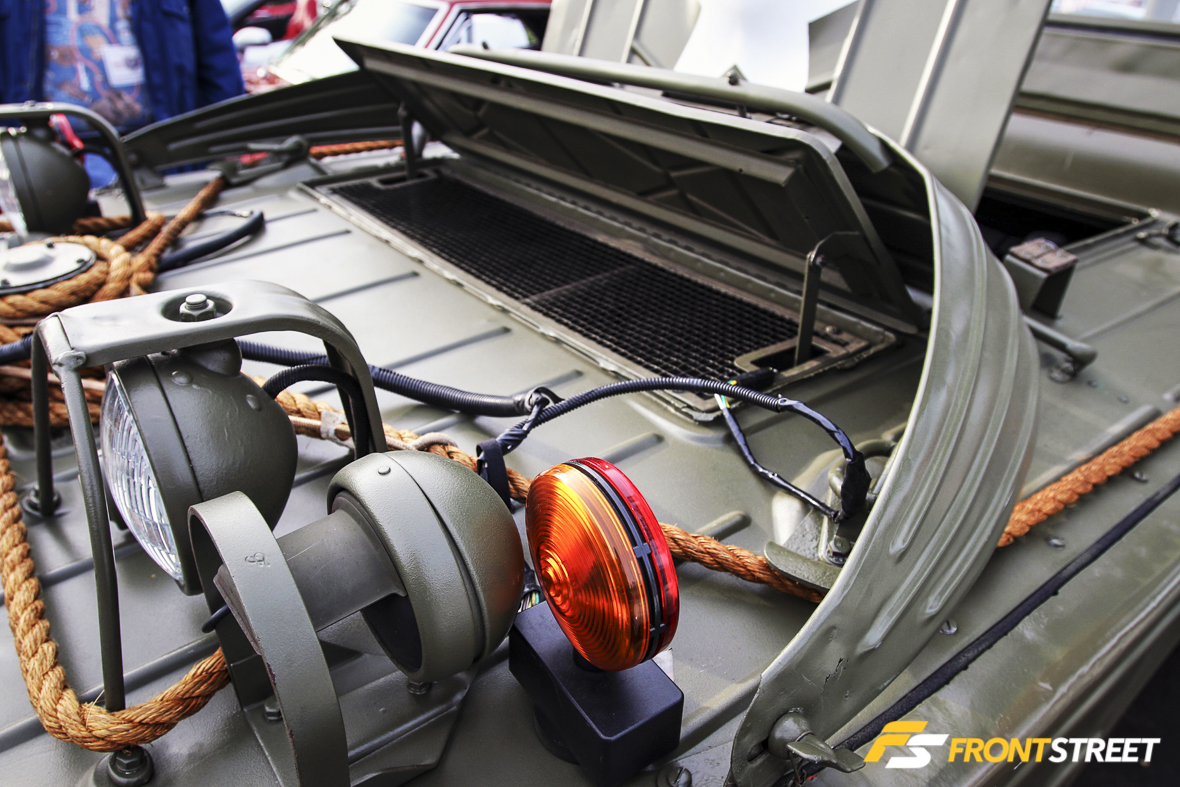
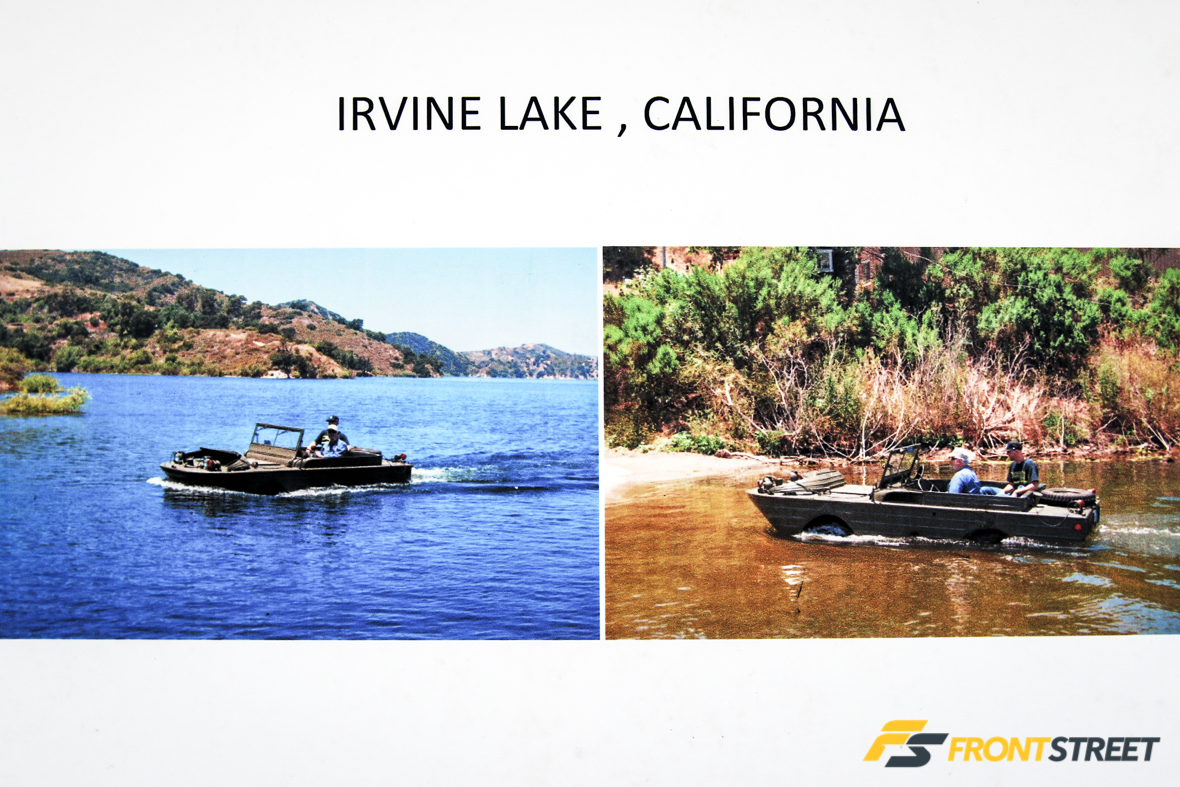
One interesting feature the owner pointed out was how the cowl cover flips down, while the bonnet cover folds in the forward position when water conditions become treacherous to prevent water from entering the vehicle.
“I’ve spent countless hours and money recreating this GPA. This amphibious vehicle is fully functional. We’ve even ridden across Irvine Lake without a hitch,” he told me. I asked if he would build another if had a chance. With a smirk, his reply was short but sweet – “No Way!”
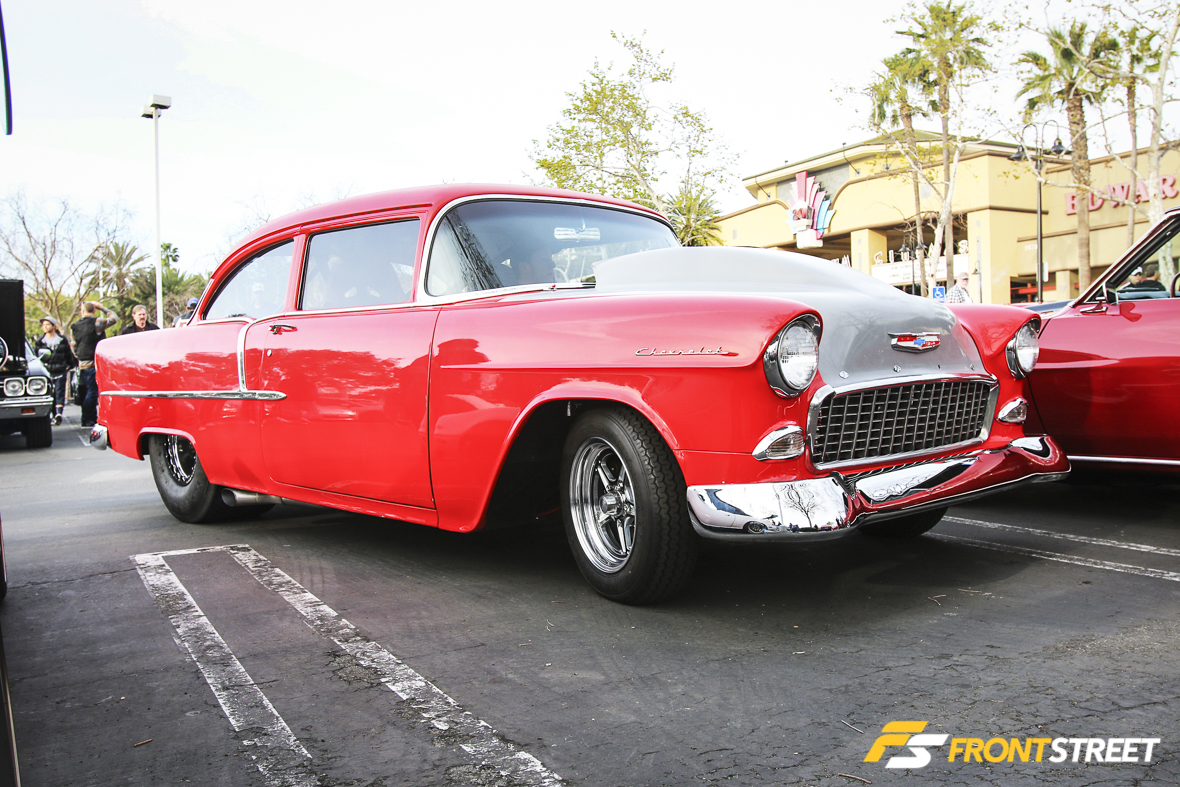
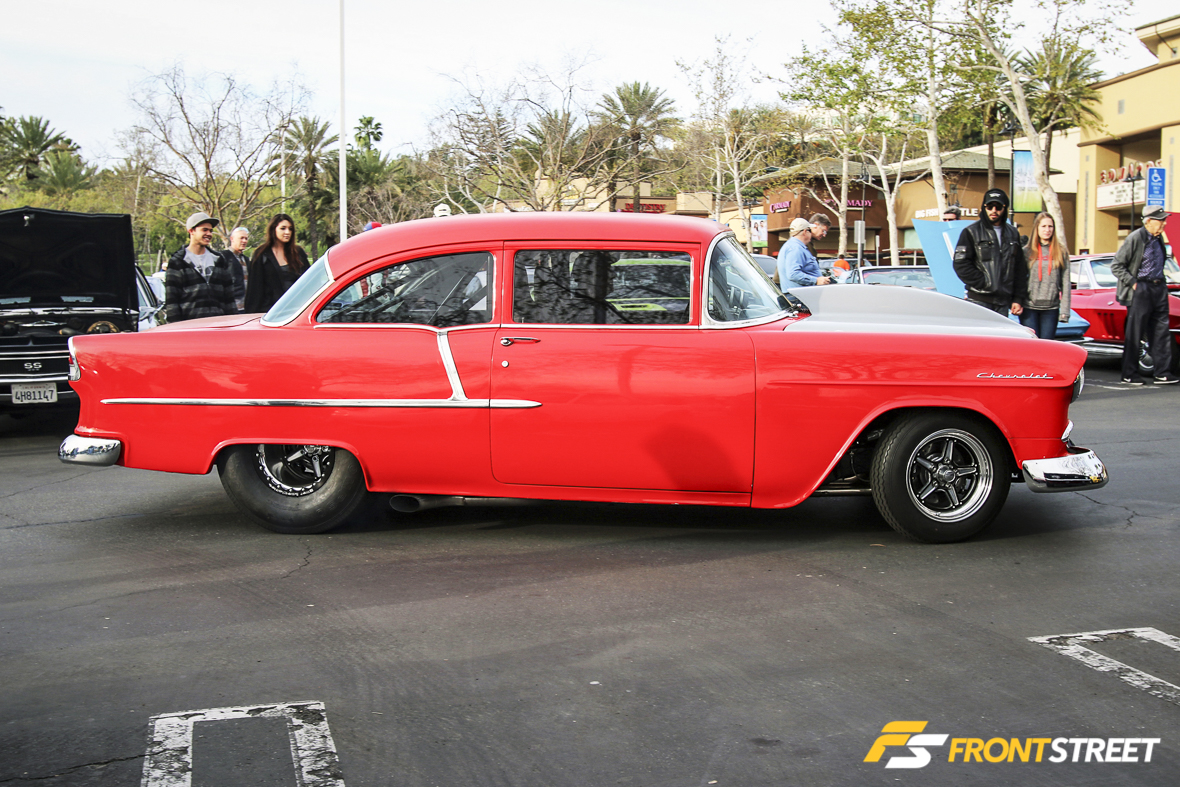
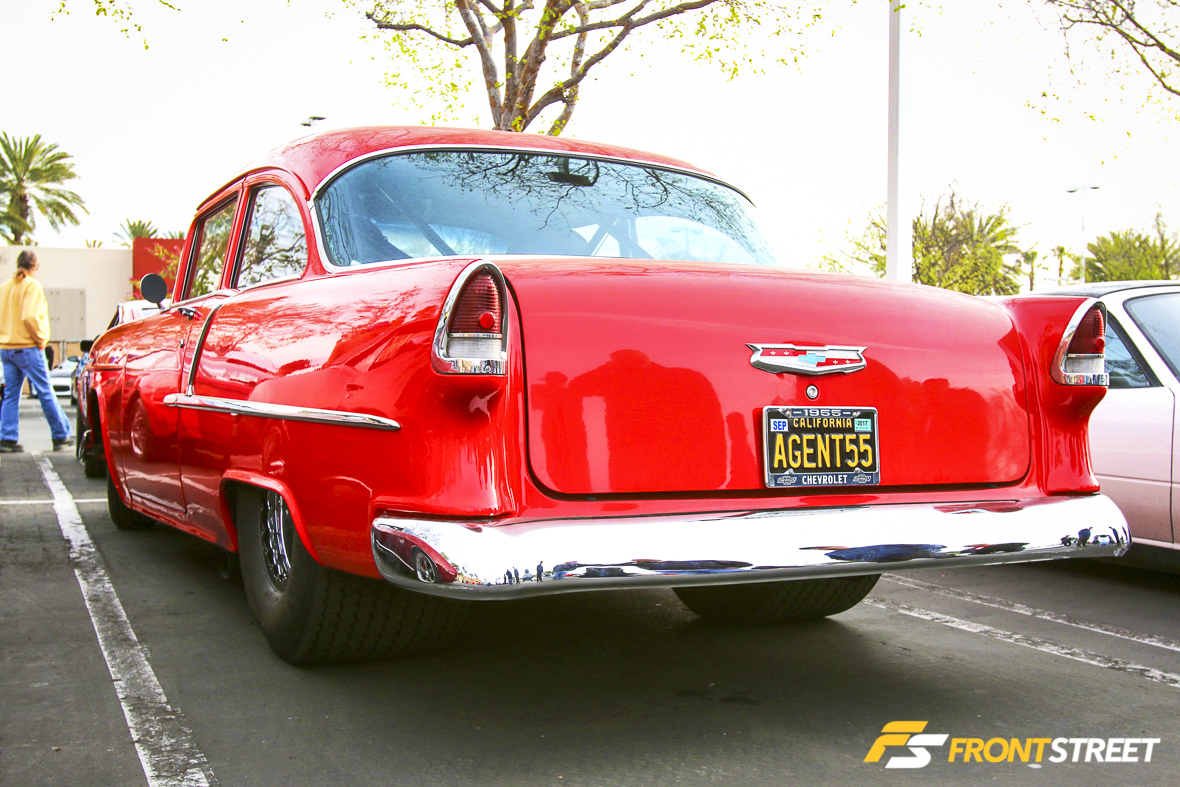
Just as I managed to snap a few photos of this ’55 Bel Air while ogling the narrowed rear end and tire combination, the owner quickly hopped into the driver’s seat and fired it up. The side-exit exhausts were pulsing plumes of smoke while spewing the pungent odors of race gas. The staccato rumble of the engine was too loud for a cordial conversation, but I did manage to decipher three of his words – “work in progress” – as he pointed towards the bonnet, suggesting either the lack of paint on the fiberglass cowl induction hood, or more go-fast-goodies in store for his engine.
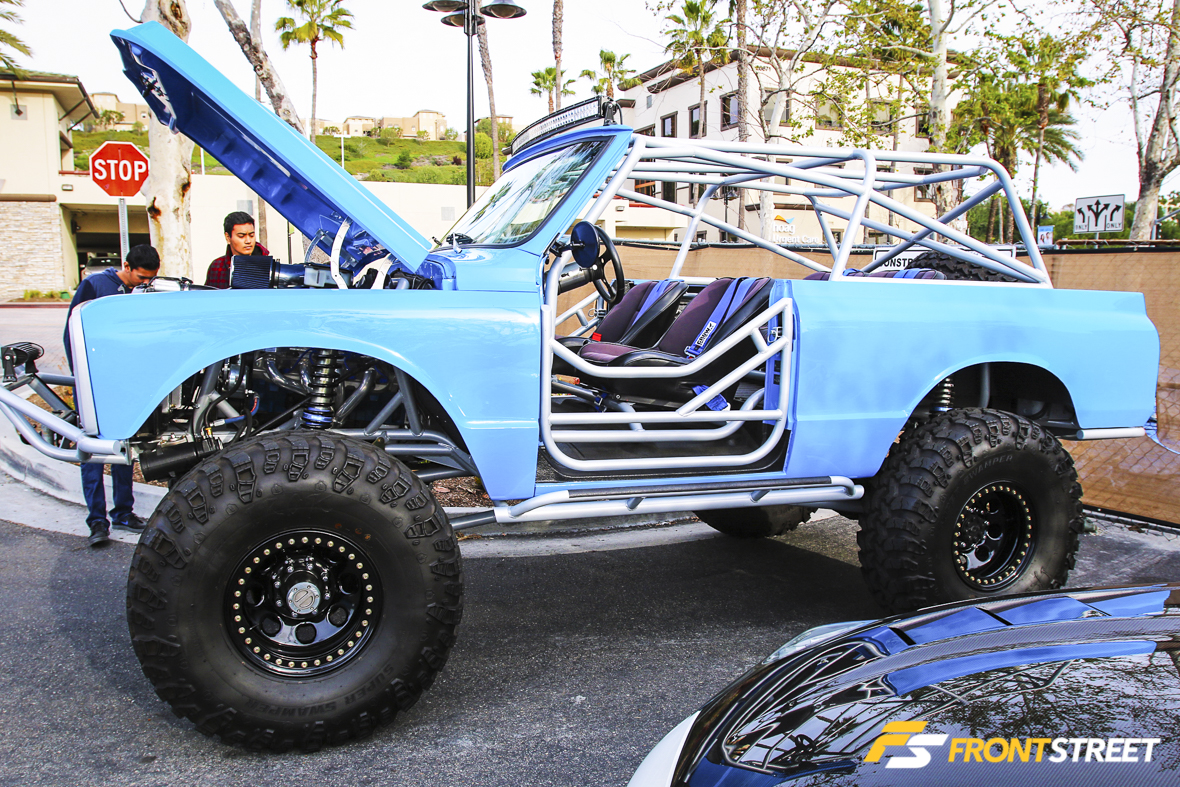
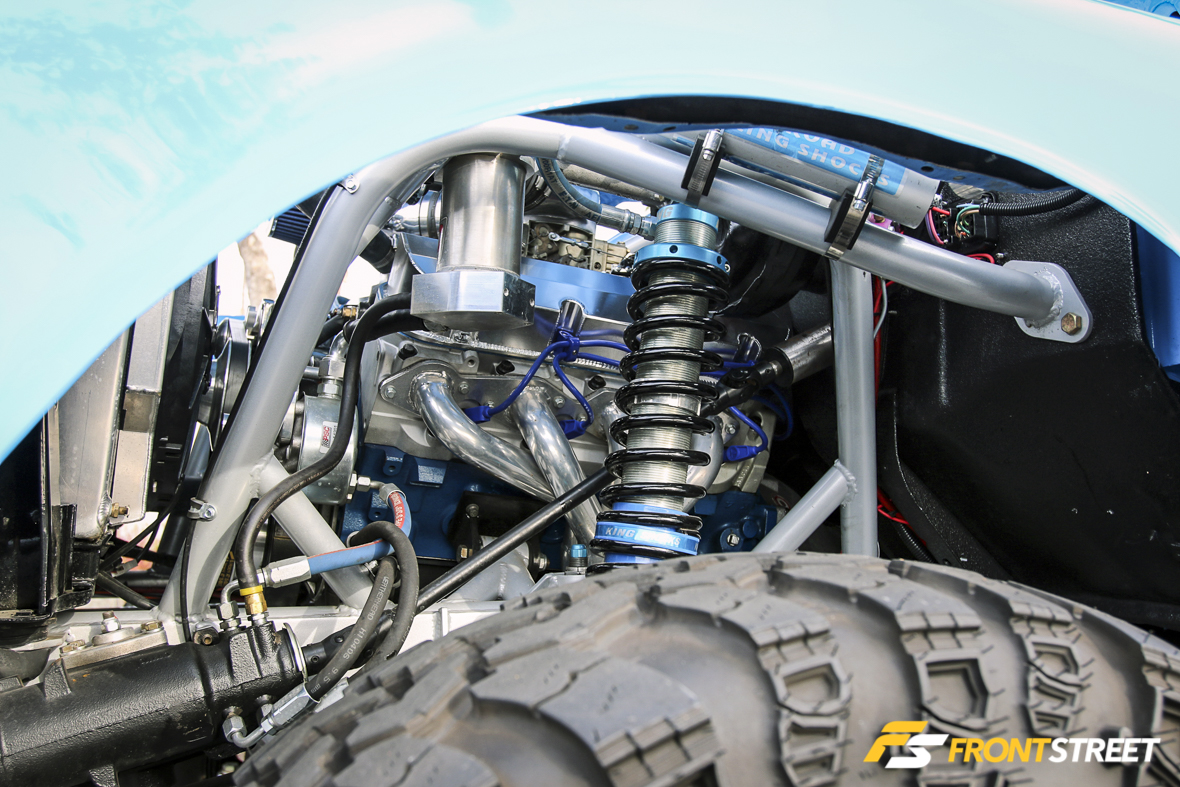
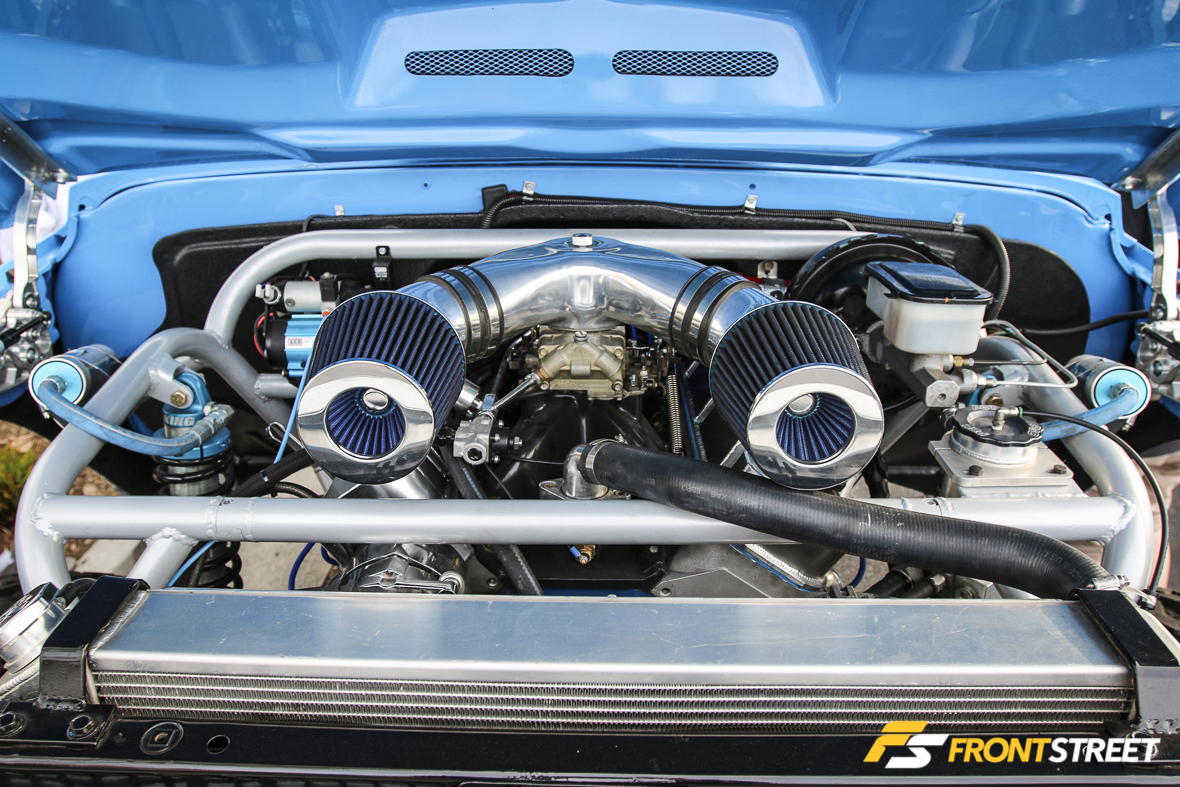
This ultra-clean Chevy C10 looked ready to annihilate an off-road course. It’s a perfect example of how to build a 50-year-old utility truck into a dirt-slinging monster. If I ever buy a C10, it better look just as nasty as this one. Super Swamper tires, King Off Road Racing Shocks with external reservoirs, a significant roll cage coupled with some serious grunt under the hood makes this one fun ride to tear up the backwoods.
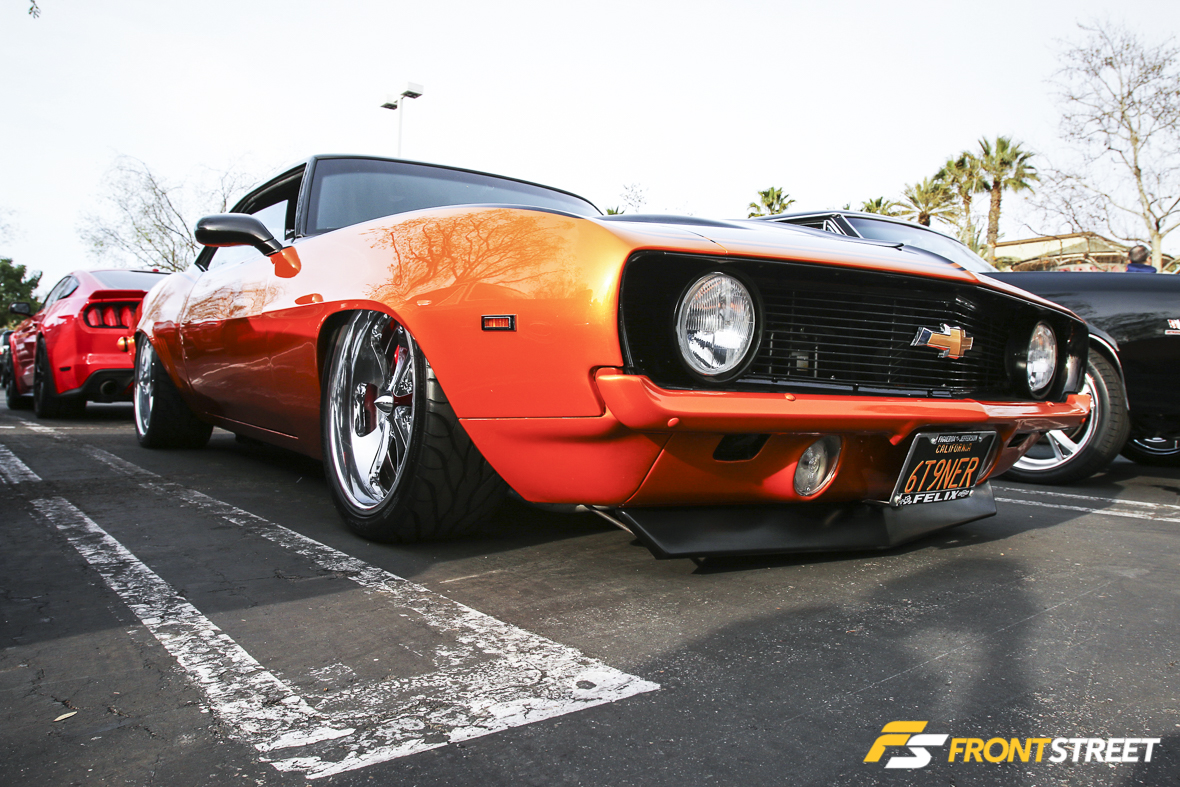
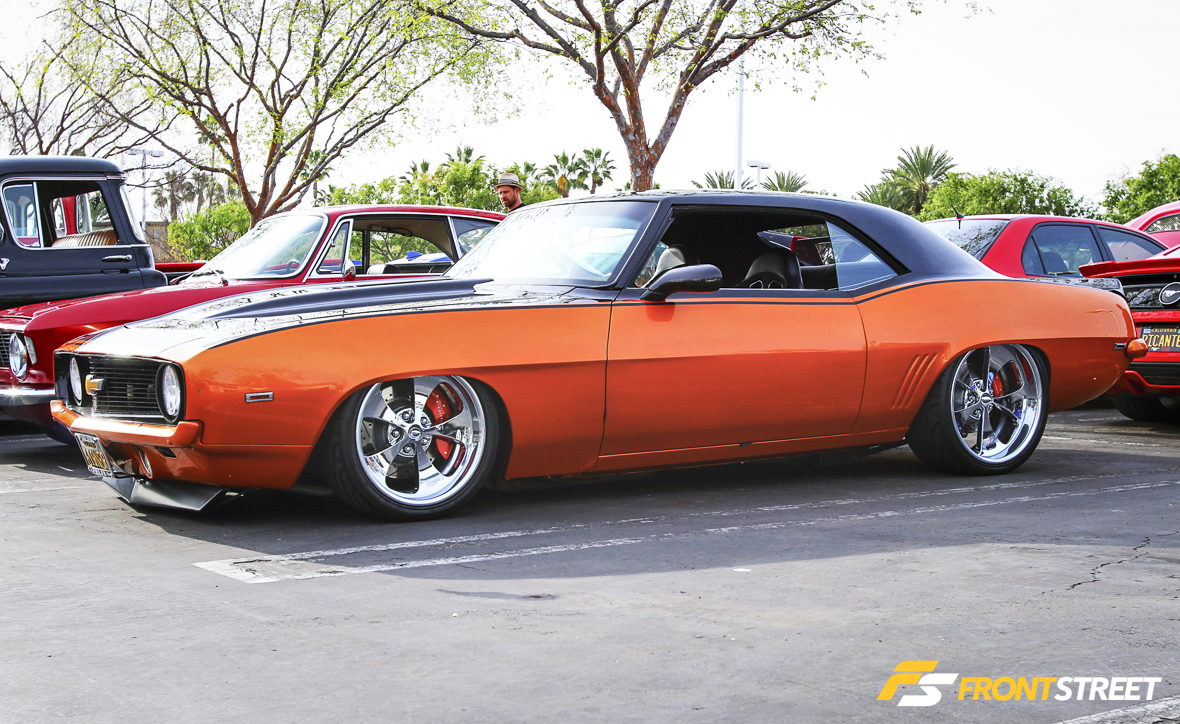
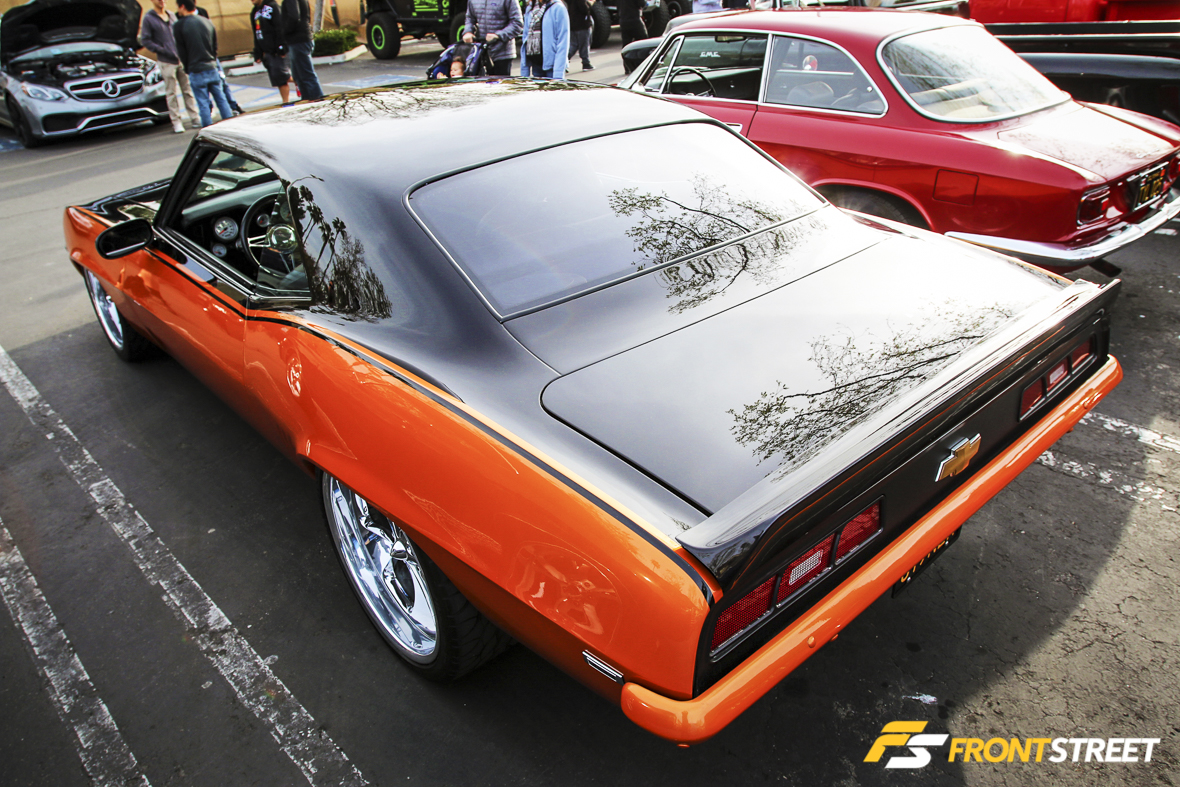
I couldn’t keep my eyes off of this ‘69 Camaro and its immaculate paint job. The custom two-tone colors really set the car off, but more impressive was the ride height! The front lip wasn’t more than an inch off the ground, and it had me wondering if it was on static suspension or running on bags. Either way, it was one of many clean rides at this meet.
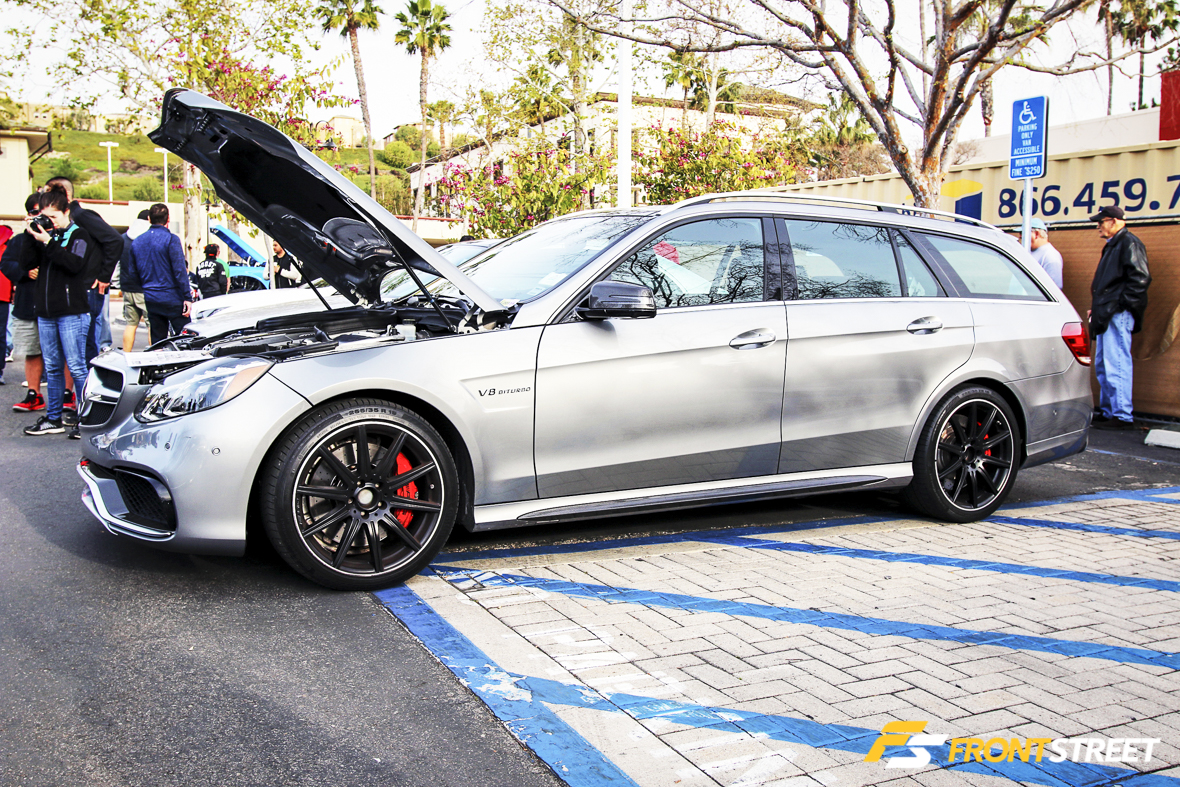
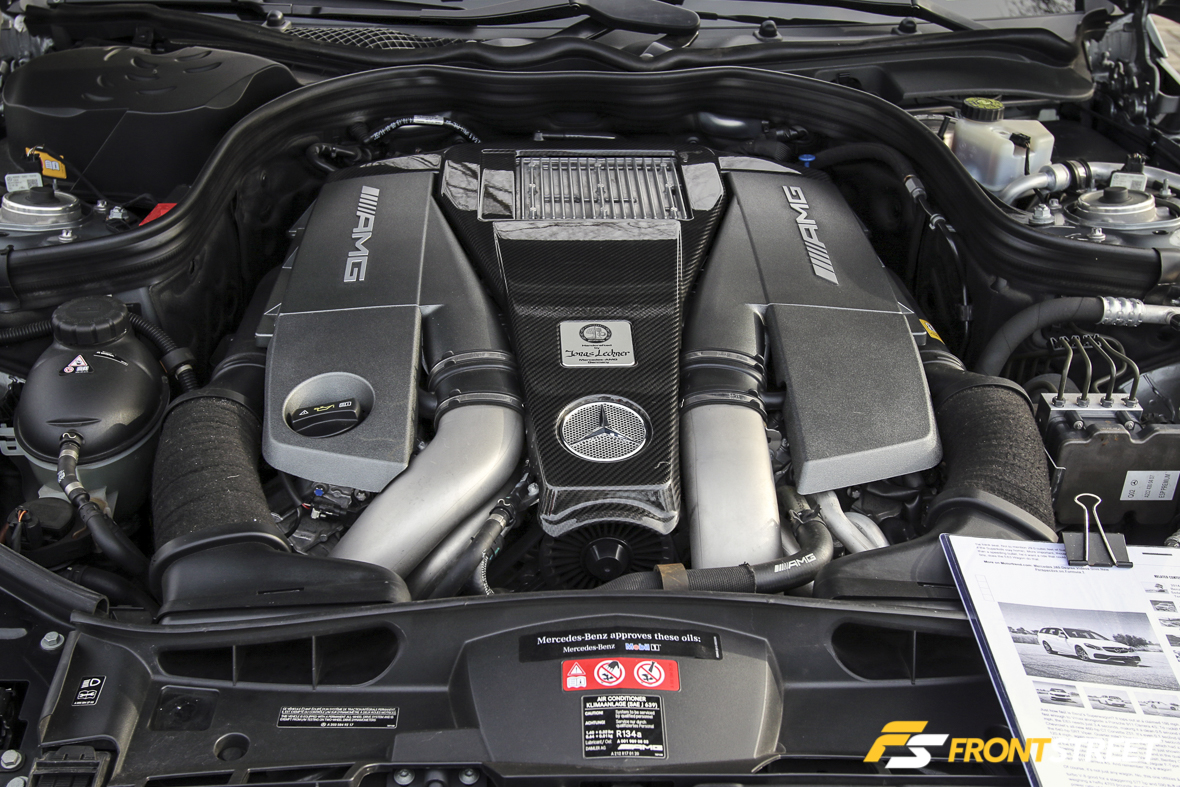
Station wagons aren’t supposed to be fast. They’re supposed to take kids to baseball practice or grab some groceries. Leave it to Mercedes and their German engineers to envision and produce the AMG E63 super wagon. Soccer dads can squeal in glory knowing this wagon packs 577 horsepower from an all-wheel-drive turbocharged V8. Even though it weighs in at a hefty 4,703 lbs., this wagon can still click off a 0-60 time a tenth quicker than the 640 horsepower SRT Viper, and an 11.7 second quarter-mile – which I should note is five tenths quicker than a C7 Corvette.
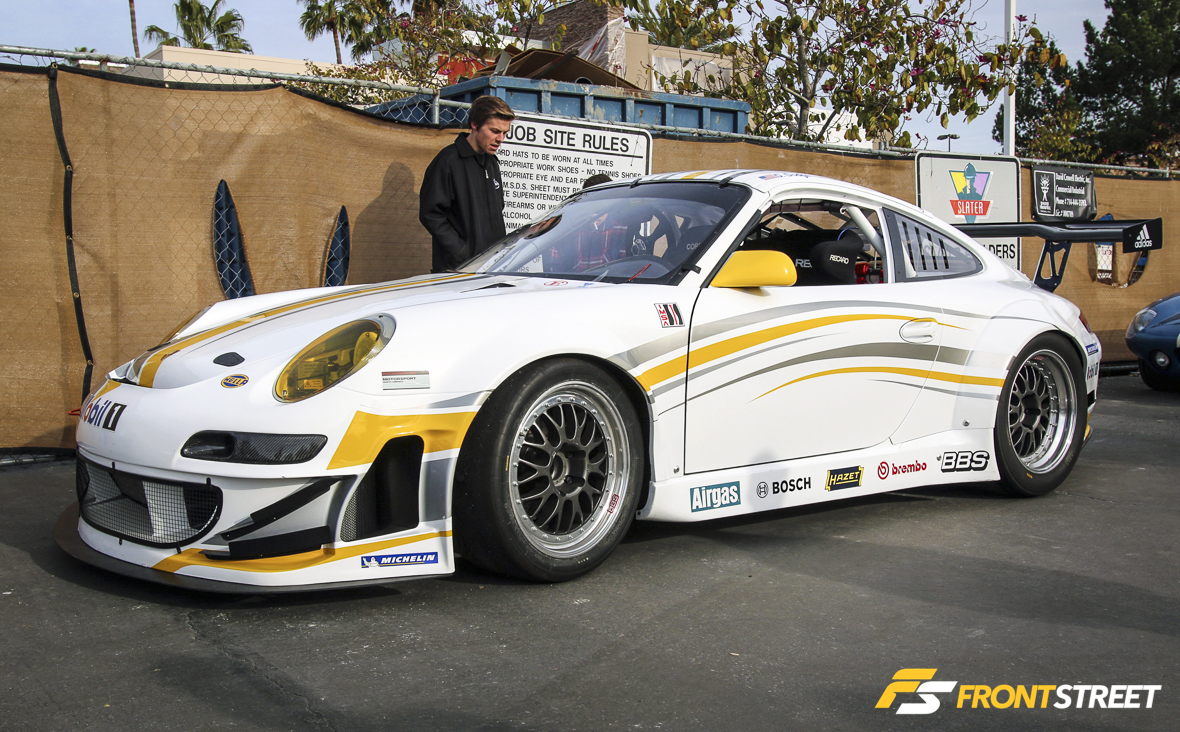
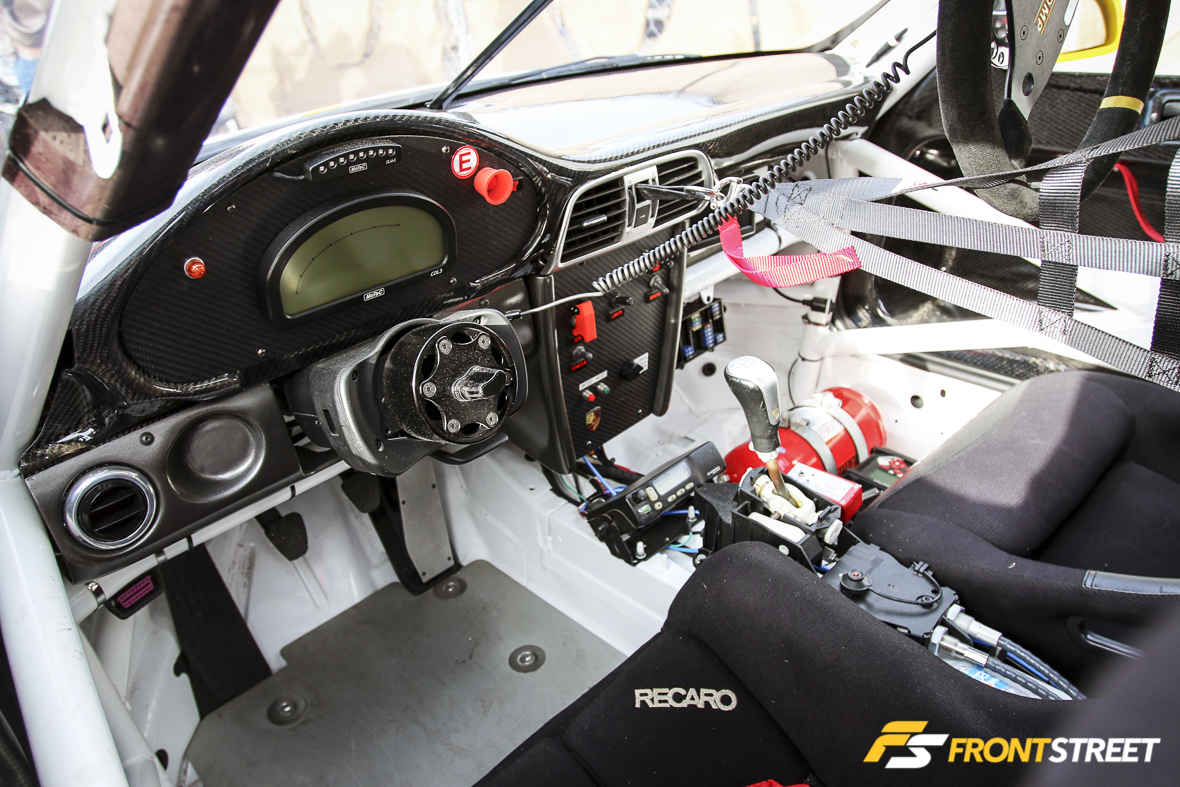
How much is a 997 GT3 RSR Cup Car worth? Sitting in the far corner of the parking lot was this awe-inspiring machine. The interior was still in full race mode; even the data acquisition and radio intercom communication systems were fully intact. The owner could literally grab a cup of coffee at the meet, then head off to the track and campaign at a fully-sanctioned race in this hot ride.
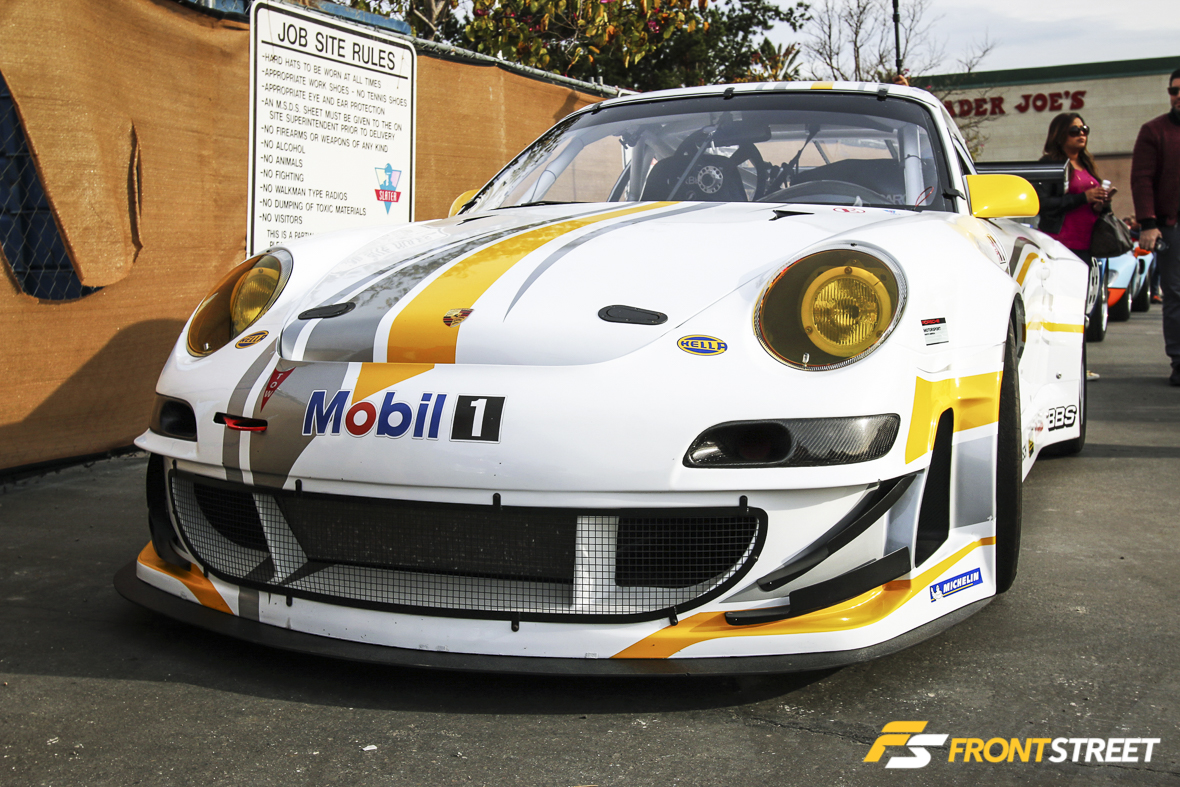
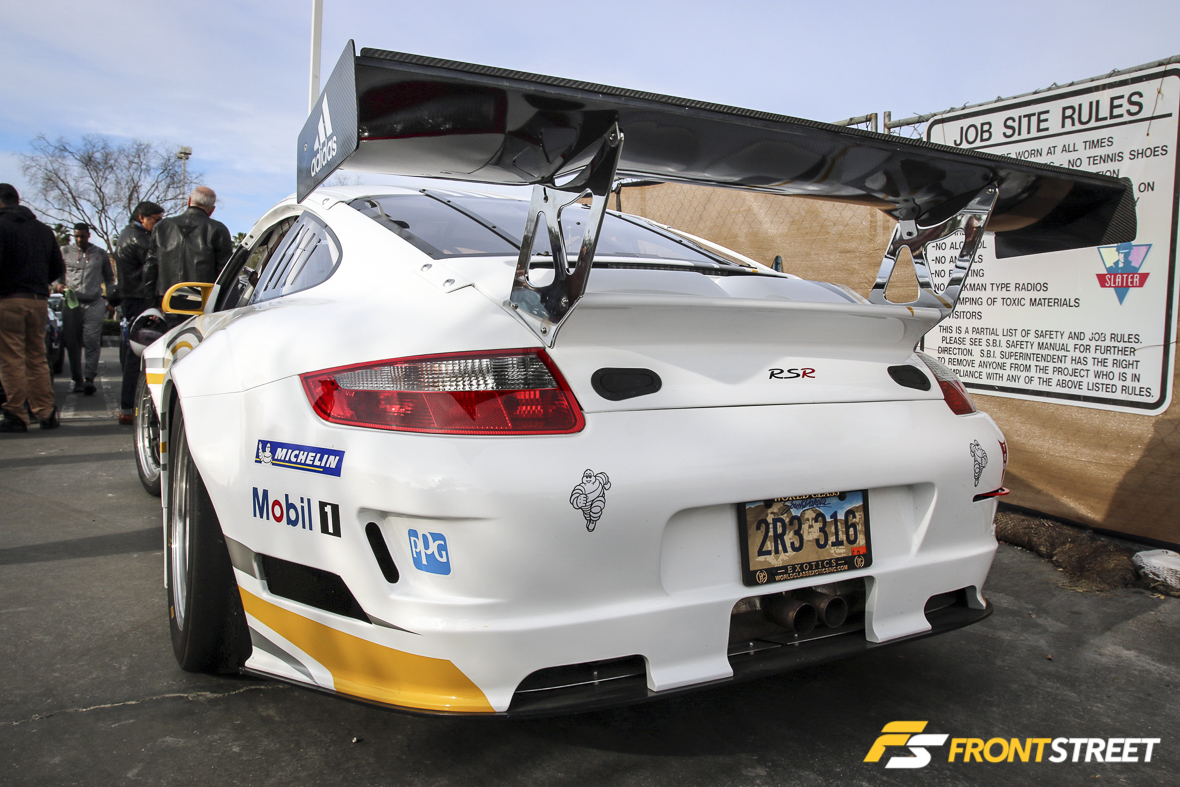
I had a hundred questions to ask the owner, which included “What race team did you pick this up from? Better yet, how are you able to drive this around on the streets?” I scanned the area, but fell short in tracking him down. The GT3 was registered with South Dakota plates so I know he definitely isn’t afraid to drive this car to and from the meet.
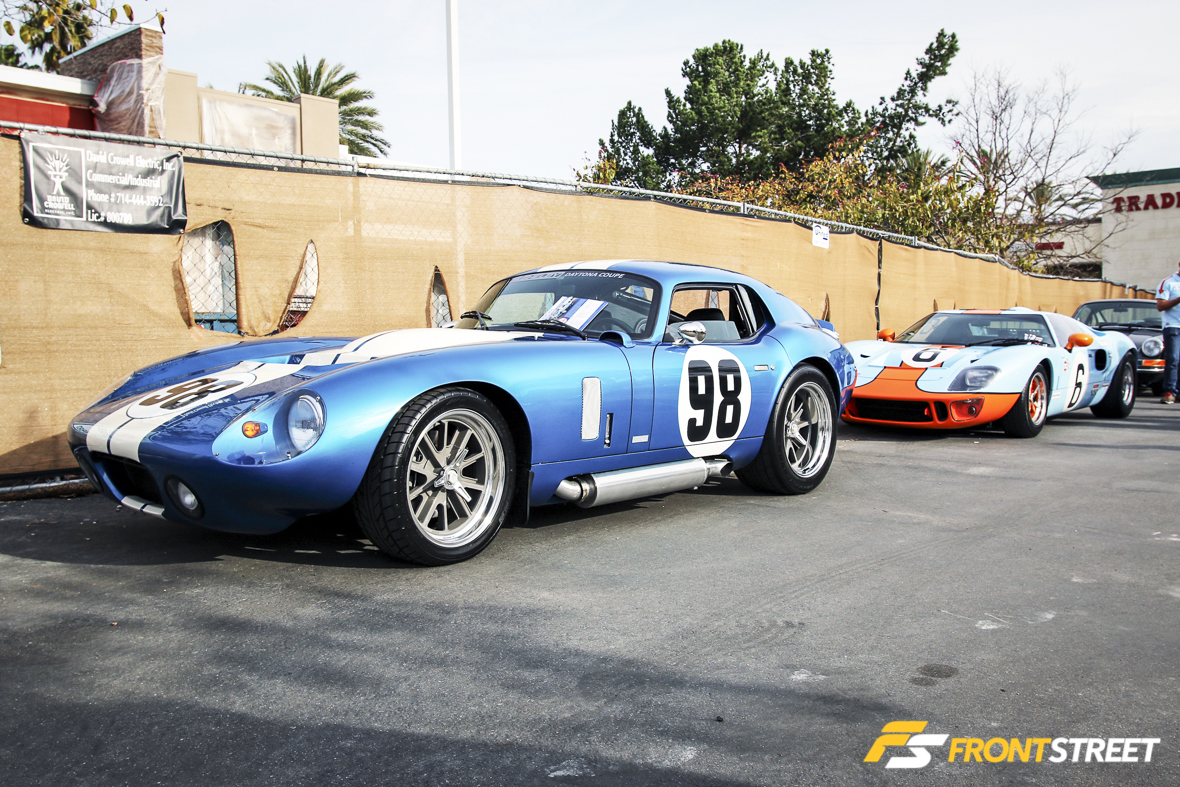
If you have $179,950 to spare, then you can swoop in and pick up this second-generation Shelby Cobra Daytona Coupe. This CSX9141 Shelby features hand-laid fiberglass or hand formed aluminum body, tube chassis frame and black Shelby signature leather interior.
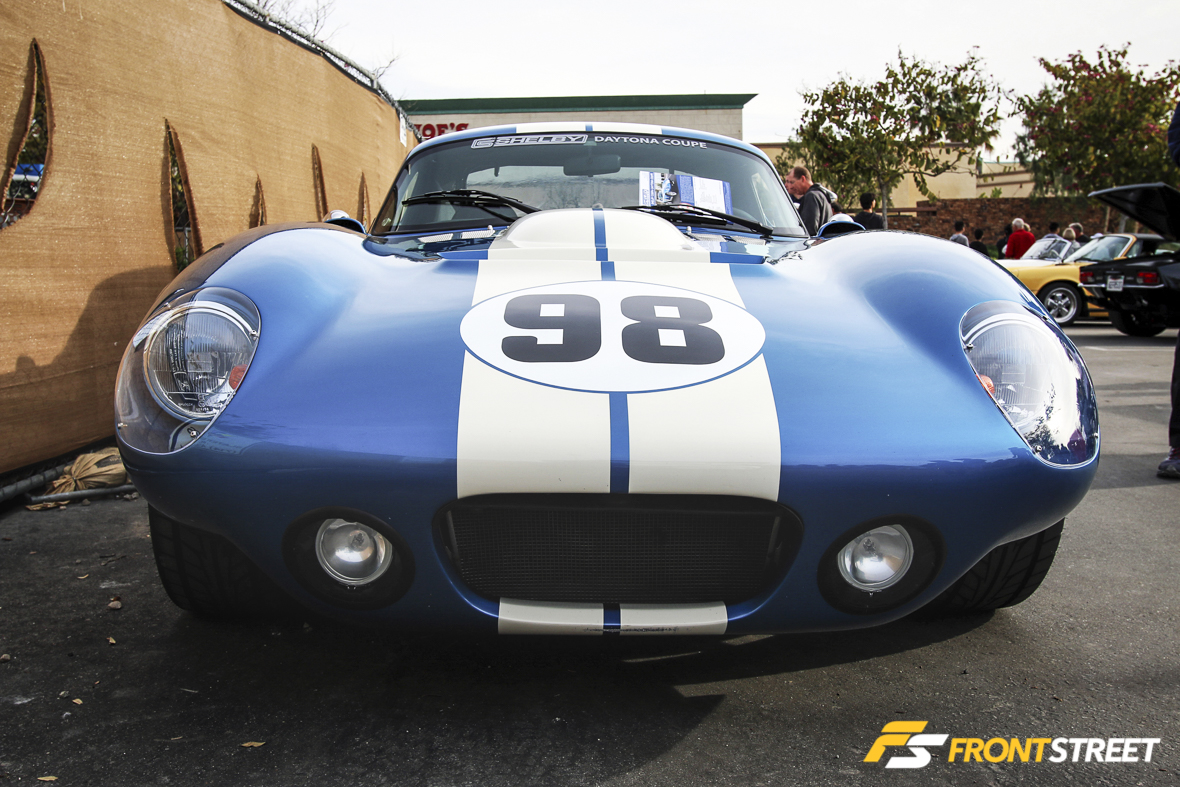
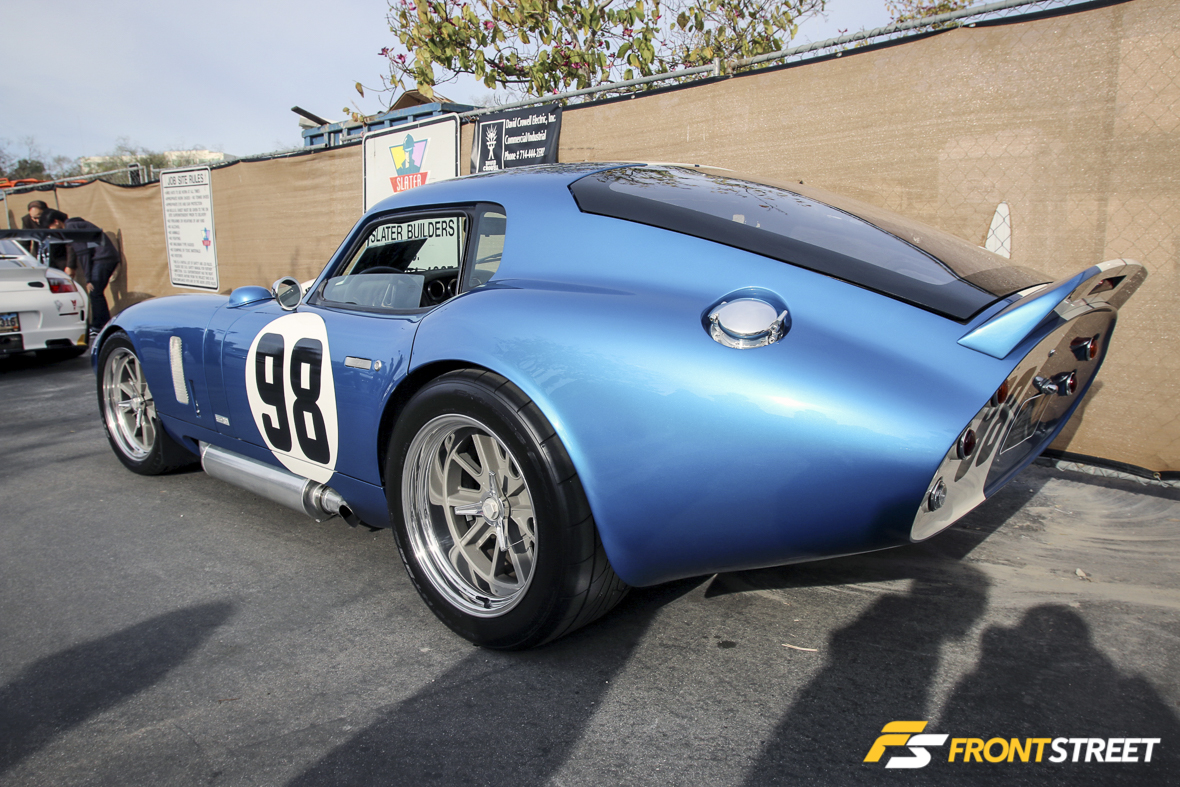
It’s currently for sale with only 505 miles on the odometer, offered though Hillbank Motorsports. The Shelby Cobra Coupe features a hand-built Shelby aluminum 427cid small block that produces 500hp, a Borla Induction 8 Stack individual throttle body intake system, custom single chamber exhaust, and a Tremec T-56 six-speed gearbox.
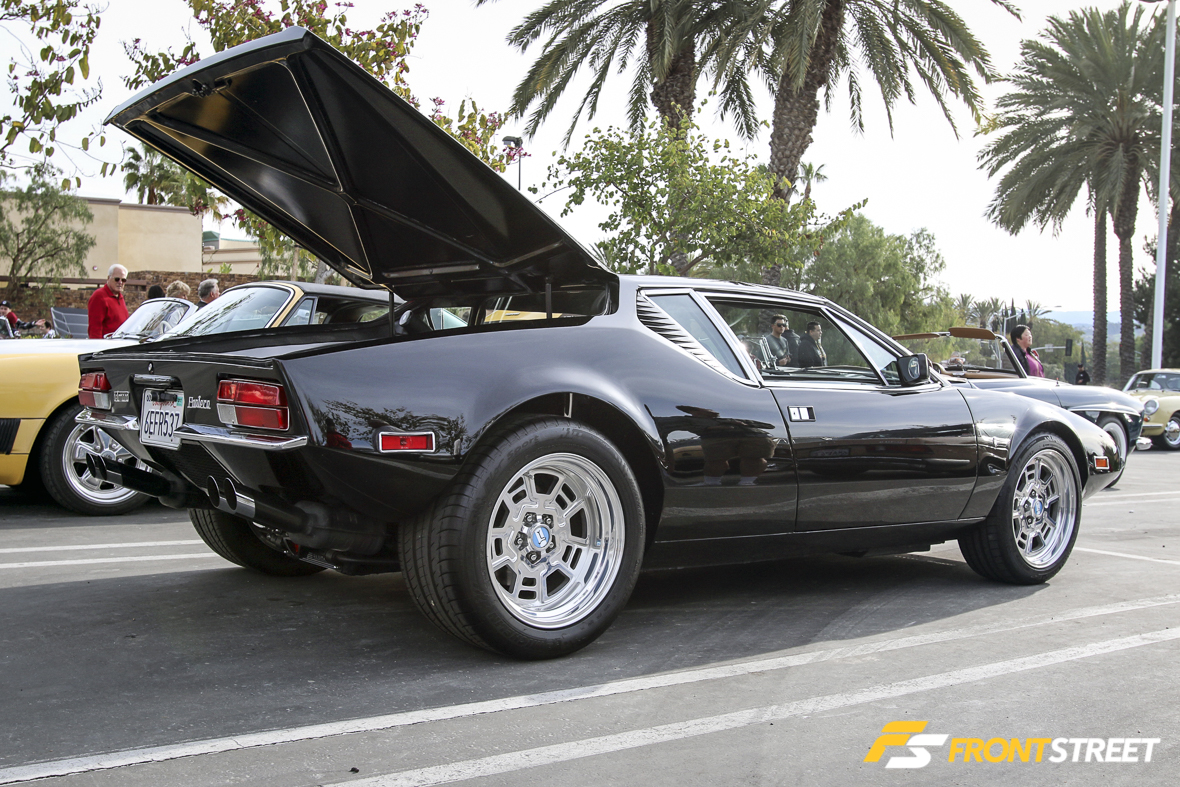
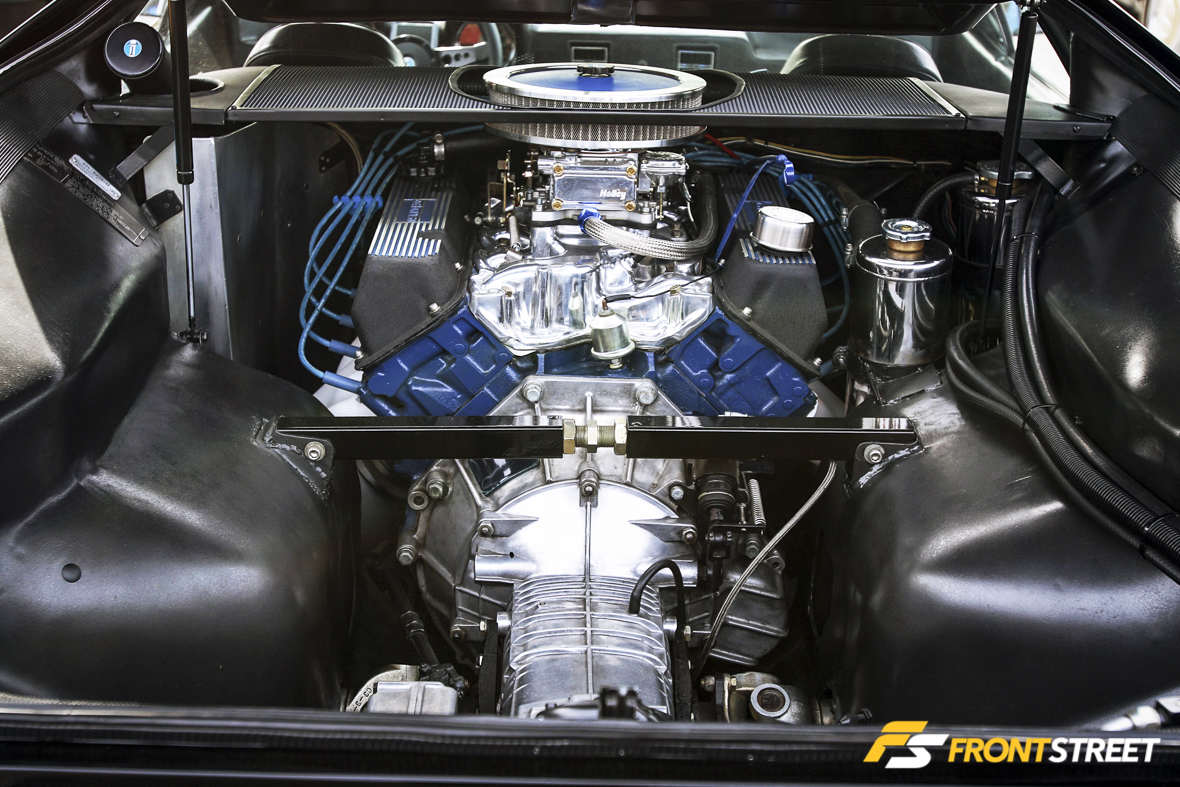
It’s not too often you come across a DeTomaso Pantera in the wild; these were regarded by many as the red-headed stepchild of the ‘70s. As quirky as these cars were, there are plenty of fans – including Jay Leno – who regards the Pantera as one of the misunderstood and undervalued cars of the past.
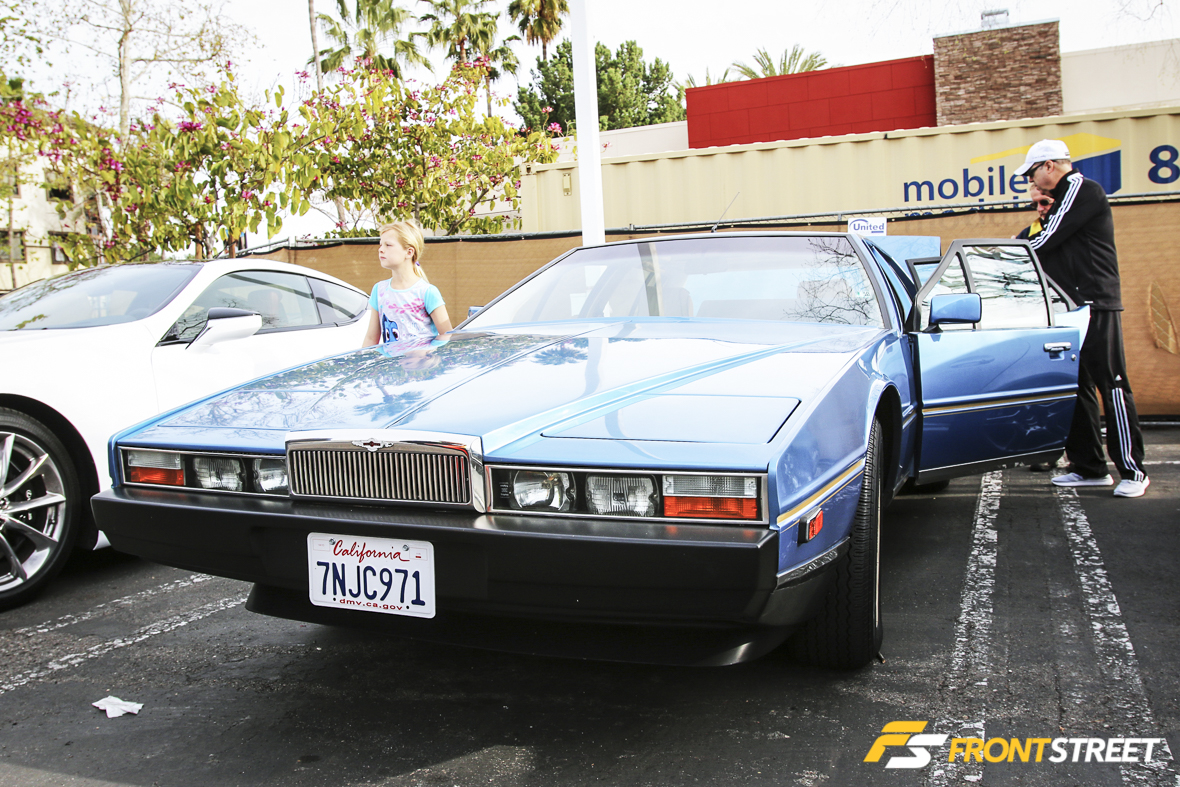
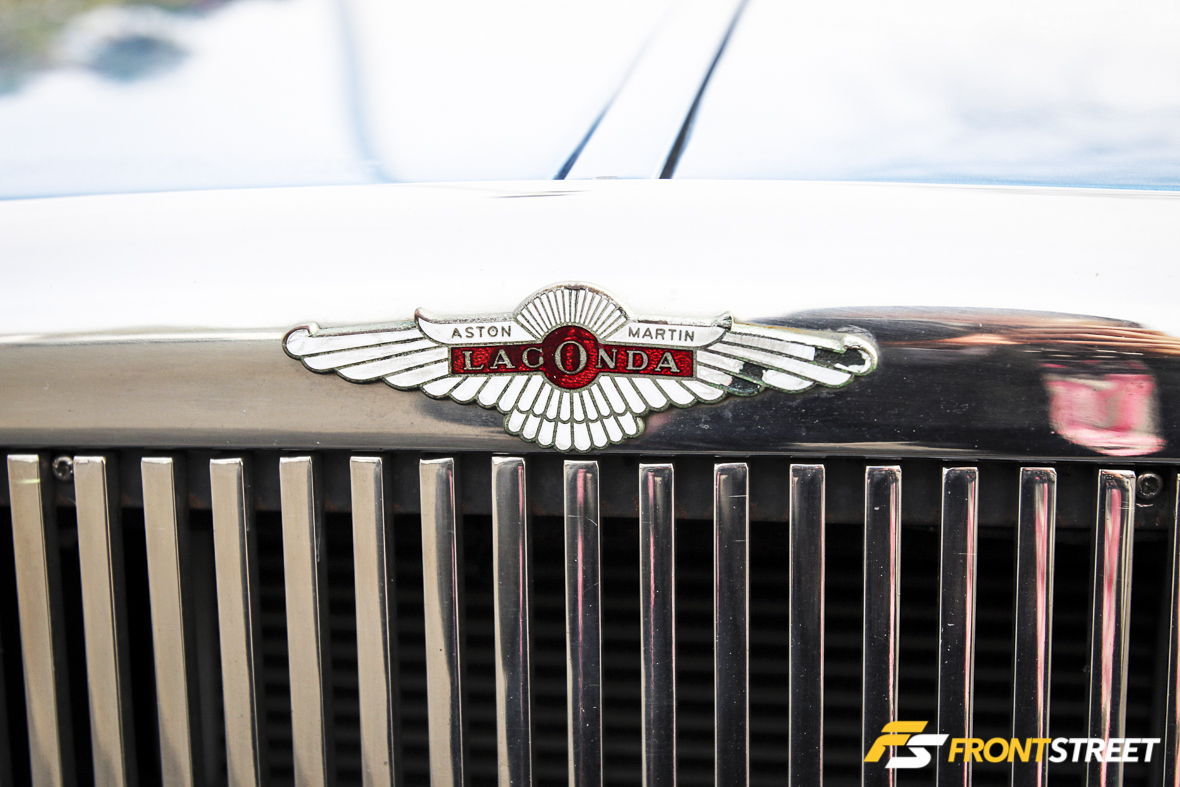
The rare and unusual were in full swing at this weekend’s meet as evidenced by this Aston Martin Lagonda. Up until today, the only time I had heard of or seen this vehicle was during an episode of Top Gear on television. The owner mentioned his saloon was not only rare (only 645 were produced from 1974 to 1990), but these 2+2 sports cars were at the time the most expensive hand-built cars in the world.
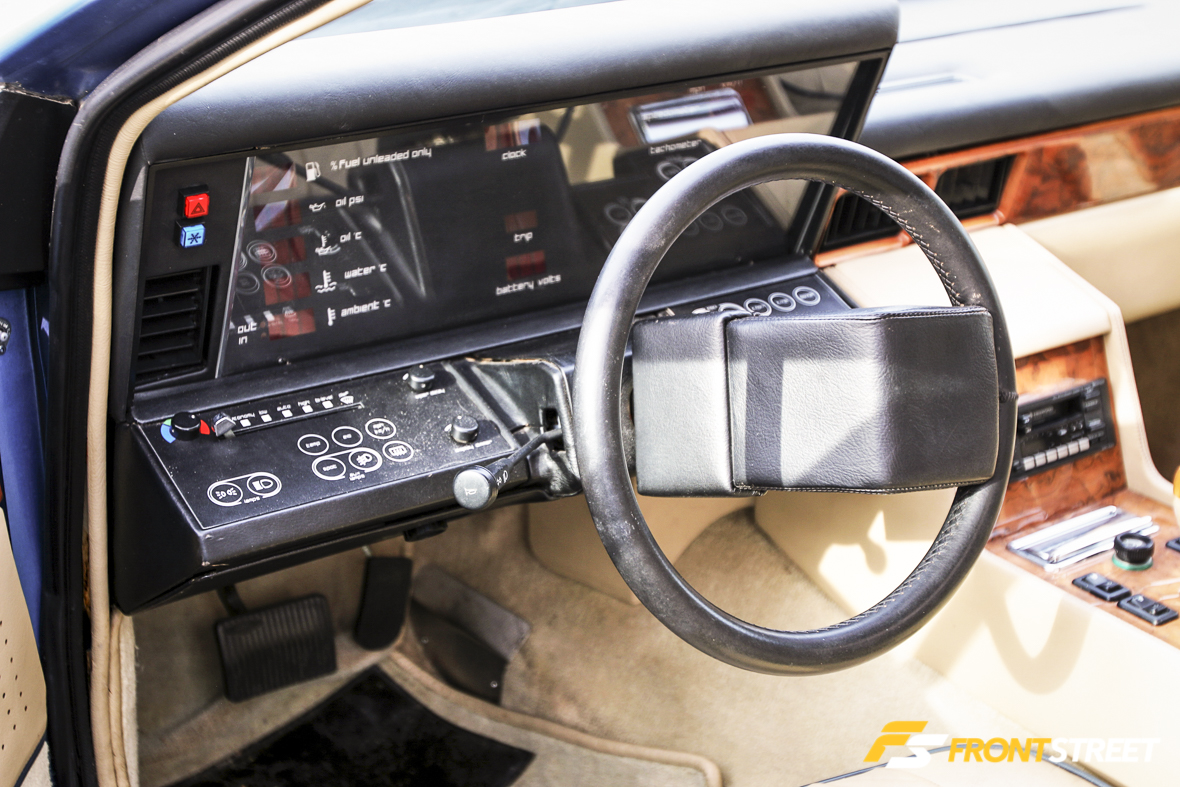
The Lagonda was the first production car in the world to use computer management and a digital instrument panel. Reminiscent of KITT from the hit ‘80s TV show Knight Rider, the instrumentation and even the steering wheel looked far beyond its time.
I asked the owner if he had any issues with the electrical system. “Is there ever a time when there isn’t? But everything is working properly at the moment,” he says. We’re crossing our fingers for him.
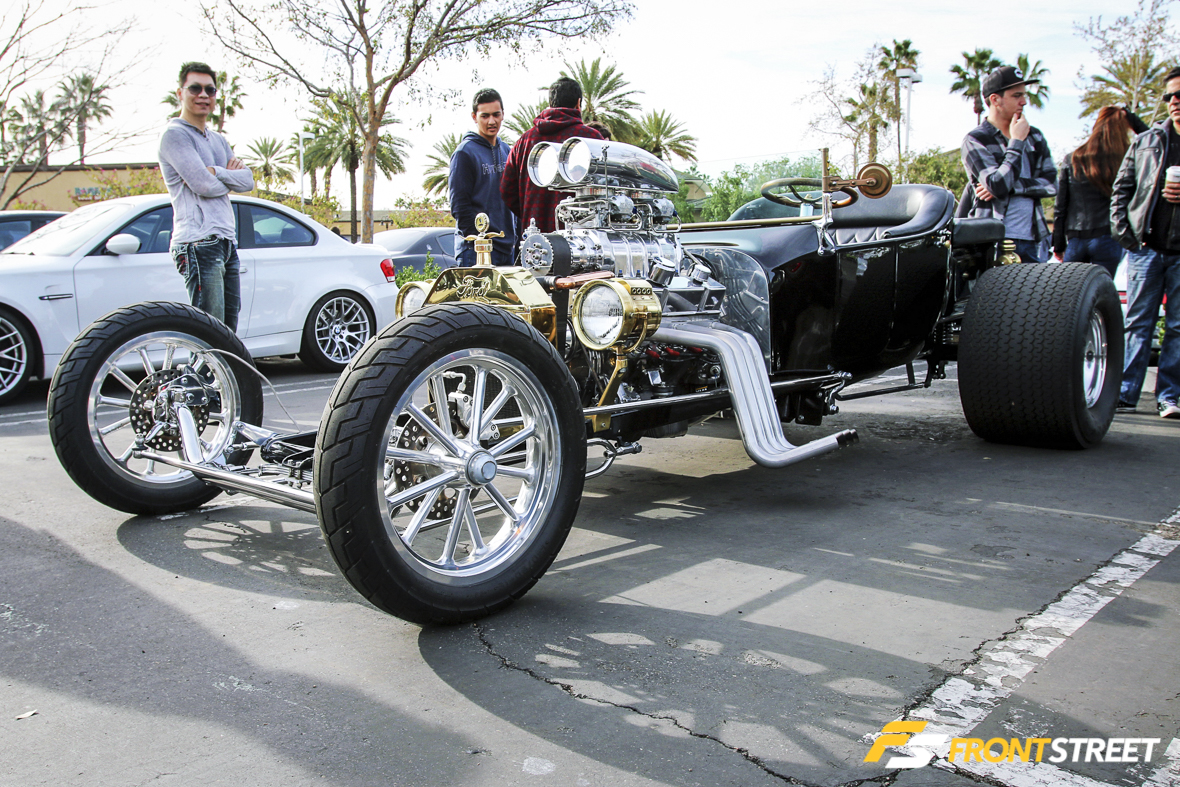
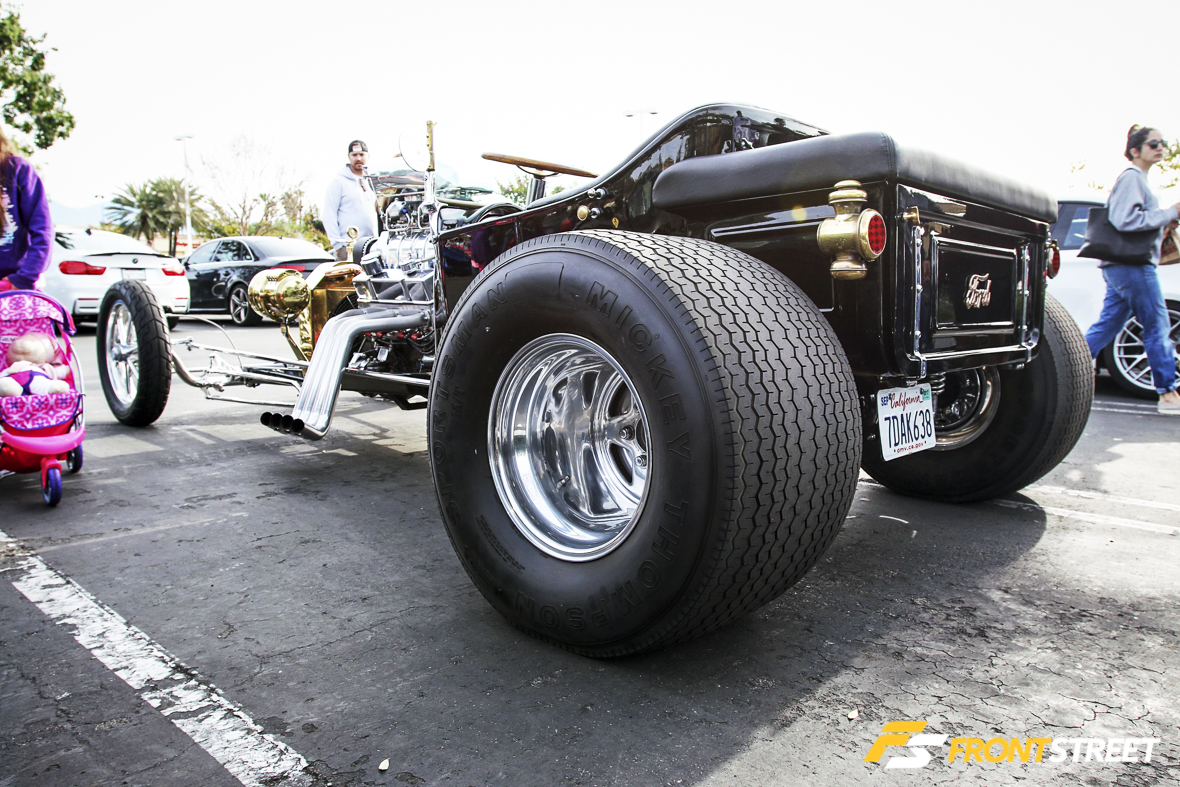
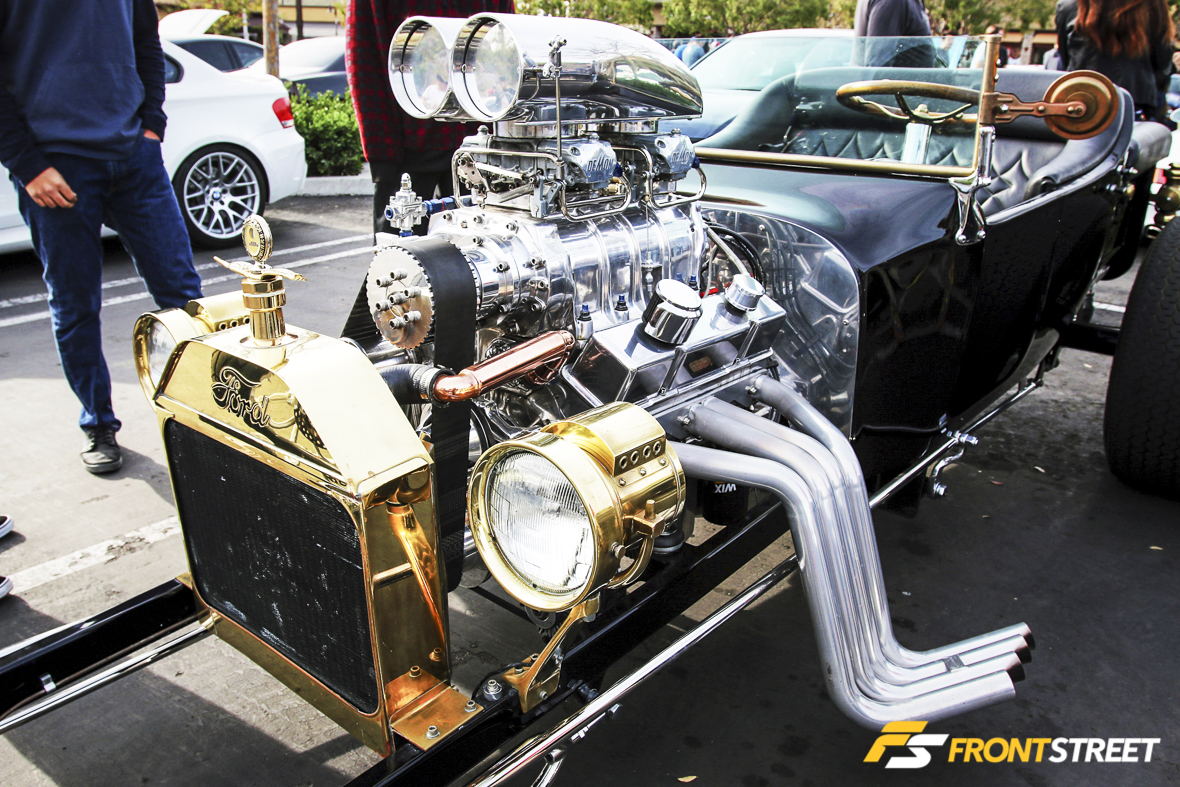
Pushing close to the 100 year anniversary since its release, the Ford T-Bucket has been an iconic hot rod classic. Fully restored from the ground up, this supercharged Bucket shouldn’t have any traction problems thanks to the robust 33×21.50 Mickey Thompson Sportsman tires.
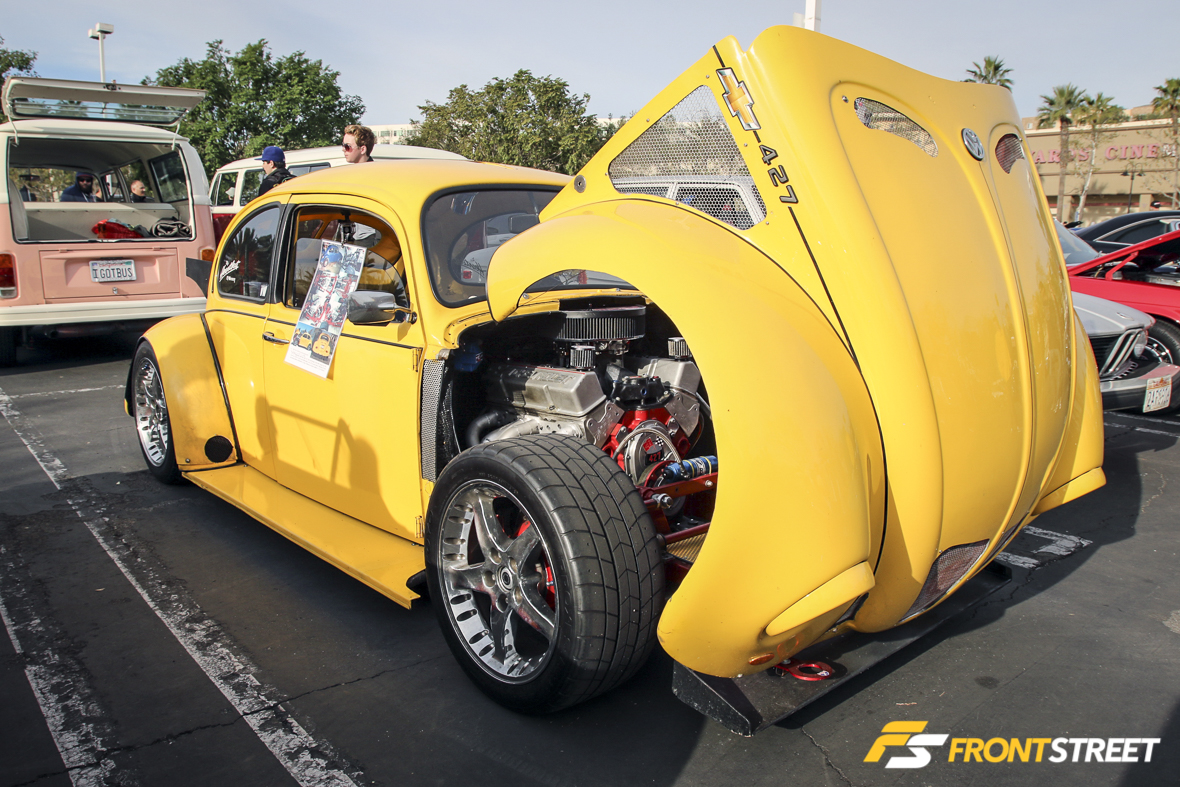
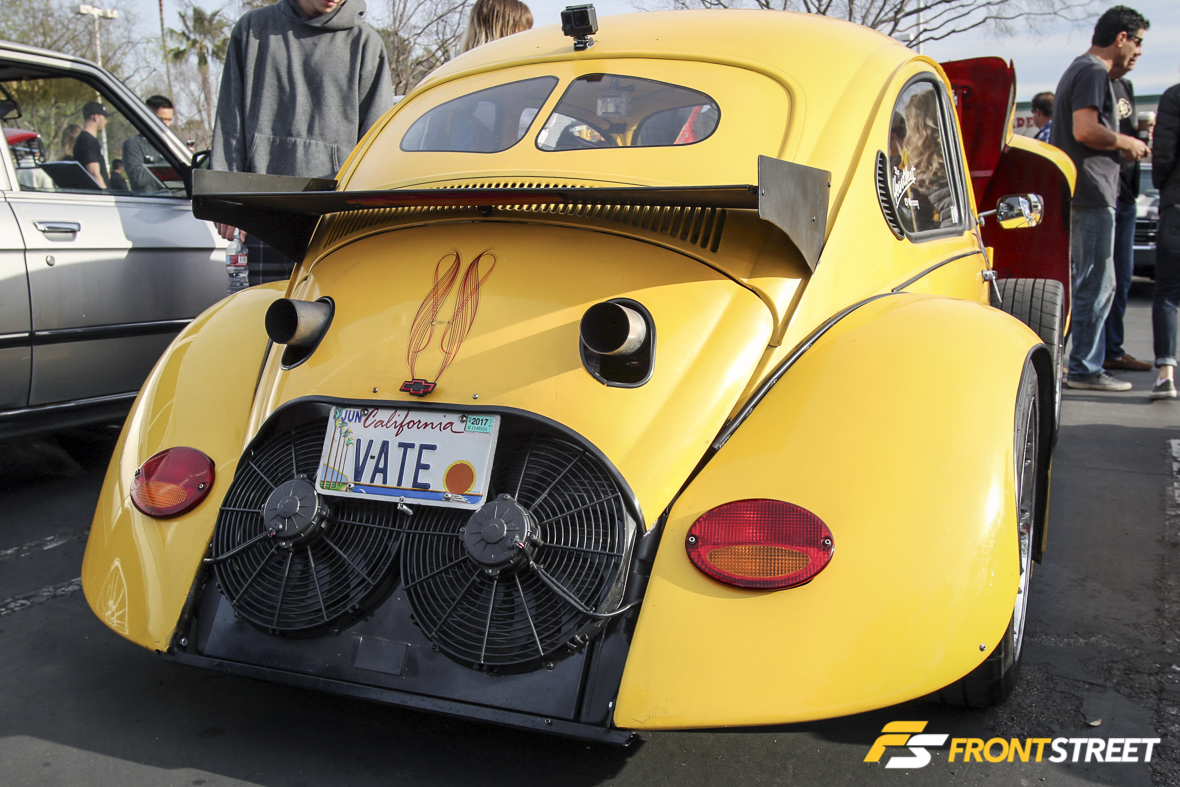
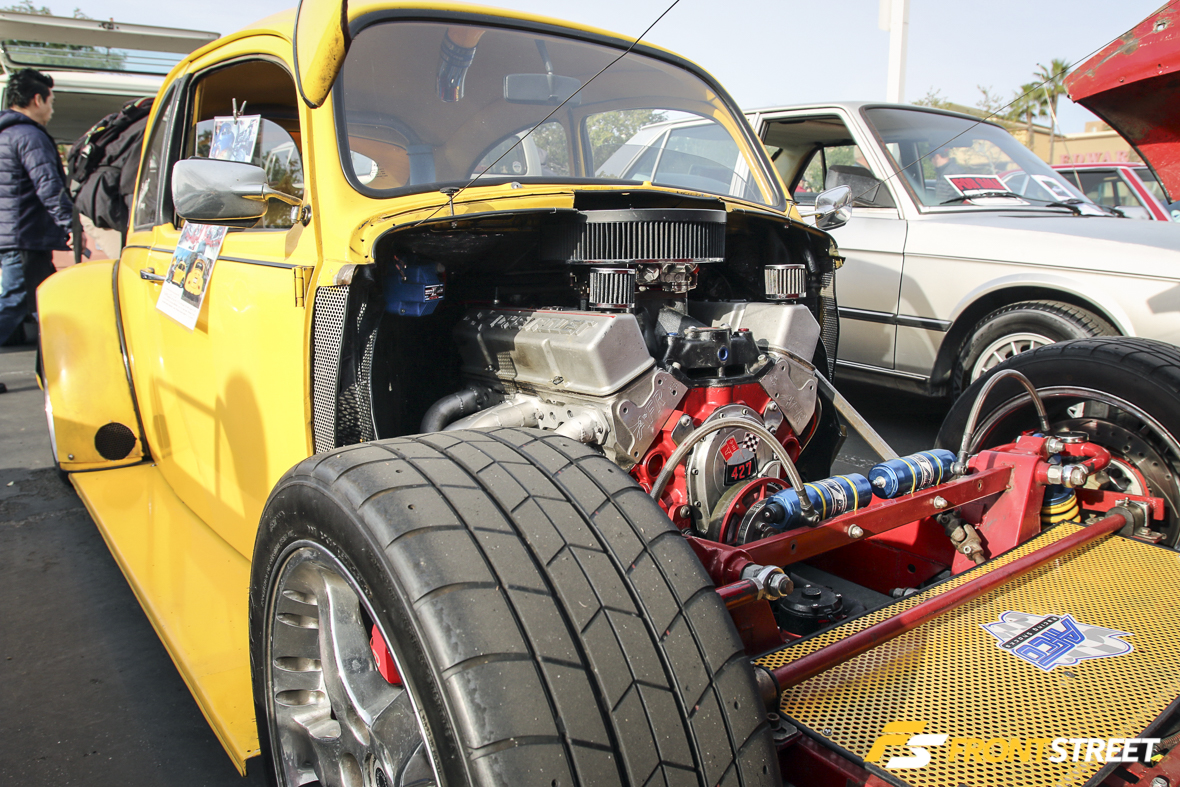
What do you get when you mix a VW Beetle with a Chevy V8? Naturally, you call it a V-Ate. The power plant consists of a 427 cubic inch engine based around one of Dart’s SHP engine blocks topped with AFR heads, and was shoehorned into this ‘71 VW Super Beetle. The power runs through a Tremec TKO 600 5-speed transmission, which is distributed through a 9-inch Ford rearend with Truetrac differential and 3.70:1 gears, all mounted to a backhalf tube frame chassis. A Mustang II rack and pinion, tubular A-arms, AFCO external reservoir coilovers, and Wilwood 6-piston calipers with 13-inch rotors completes this build to create one unique ride.
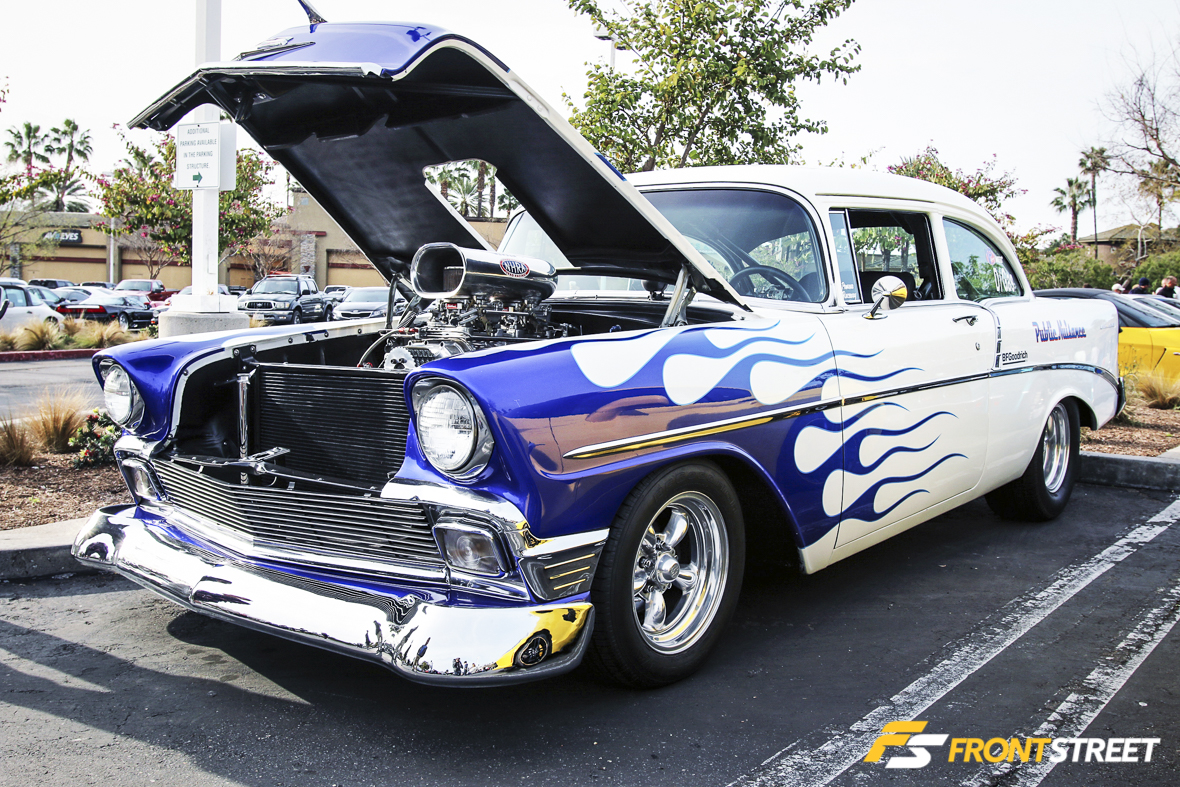
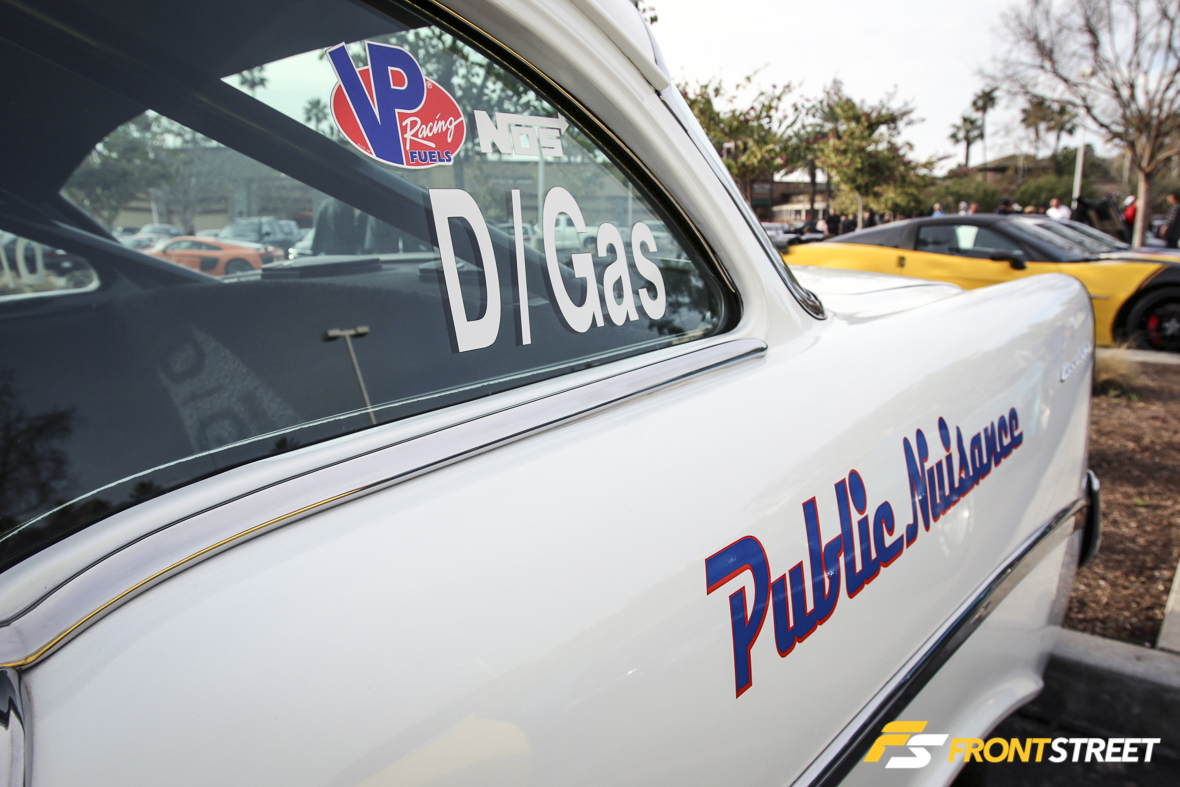
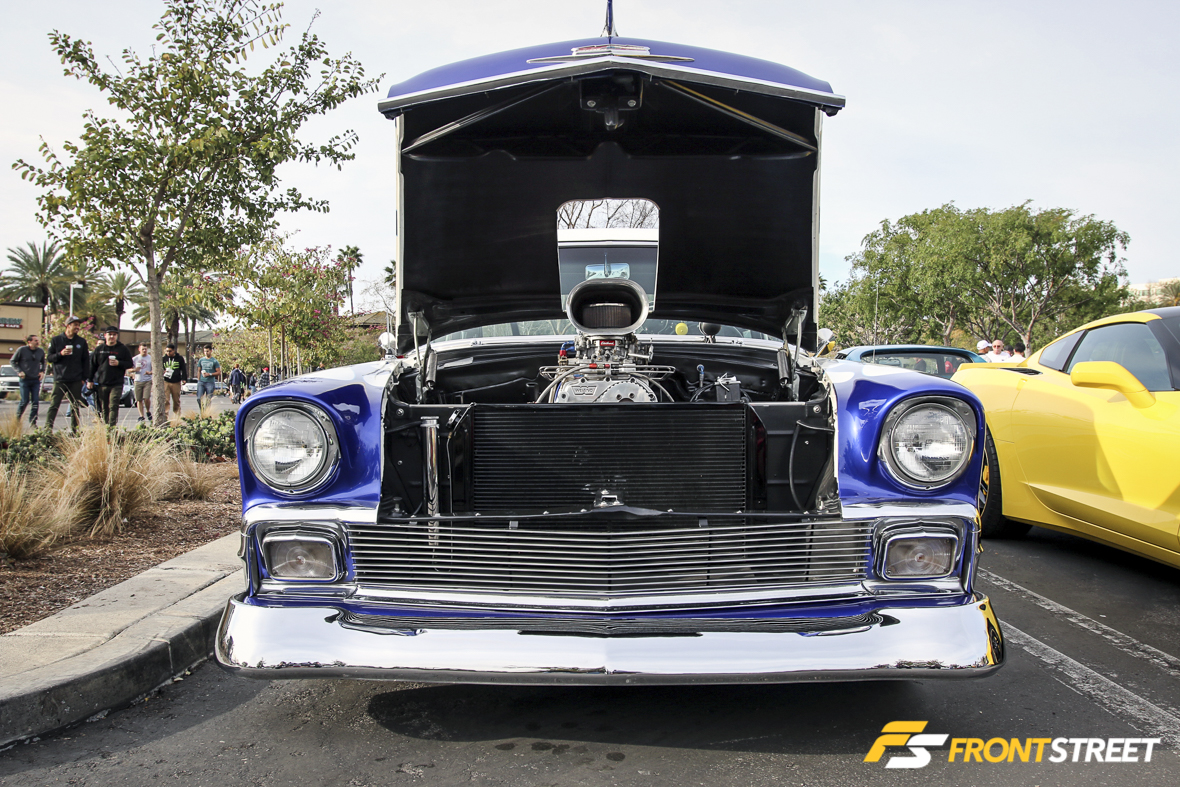
This ‘56 Belair – nicknamed “Public Nuisance” – was built as a throwback car to campaign in the D/Gas drag class. It was a true labor of love, with many long hours to rebuild and finish this Chevy. Reshot in iridescent pearl while, the front end was finished with translucent blue pearl flames.
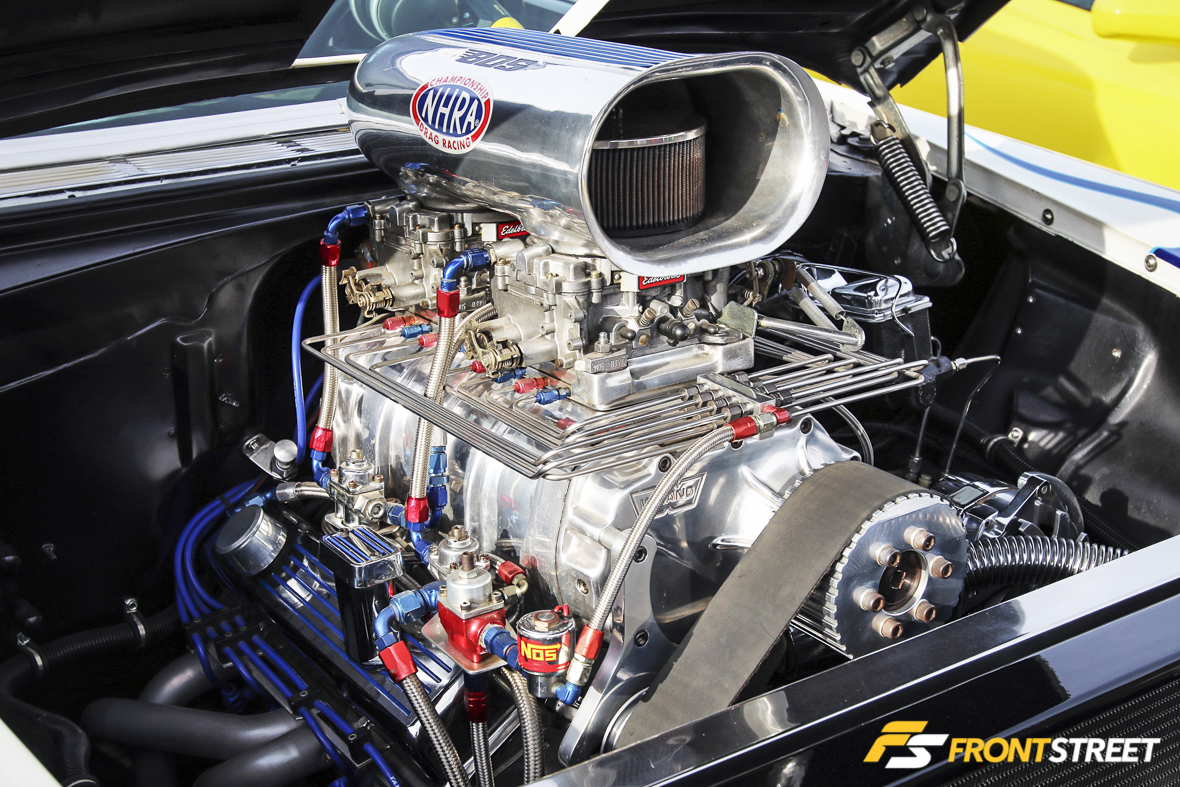
Under the hood resides a small-block Chevrolet, sucking fuel through dual 4-barrel Edelbrock carburetors mounted atop a Weiand 6-71 supercharger. A Pro Shot NOS Fogger system provides some extra power when hammer-down at the quarter-mile.
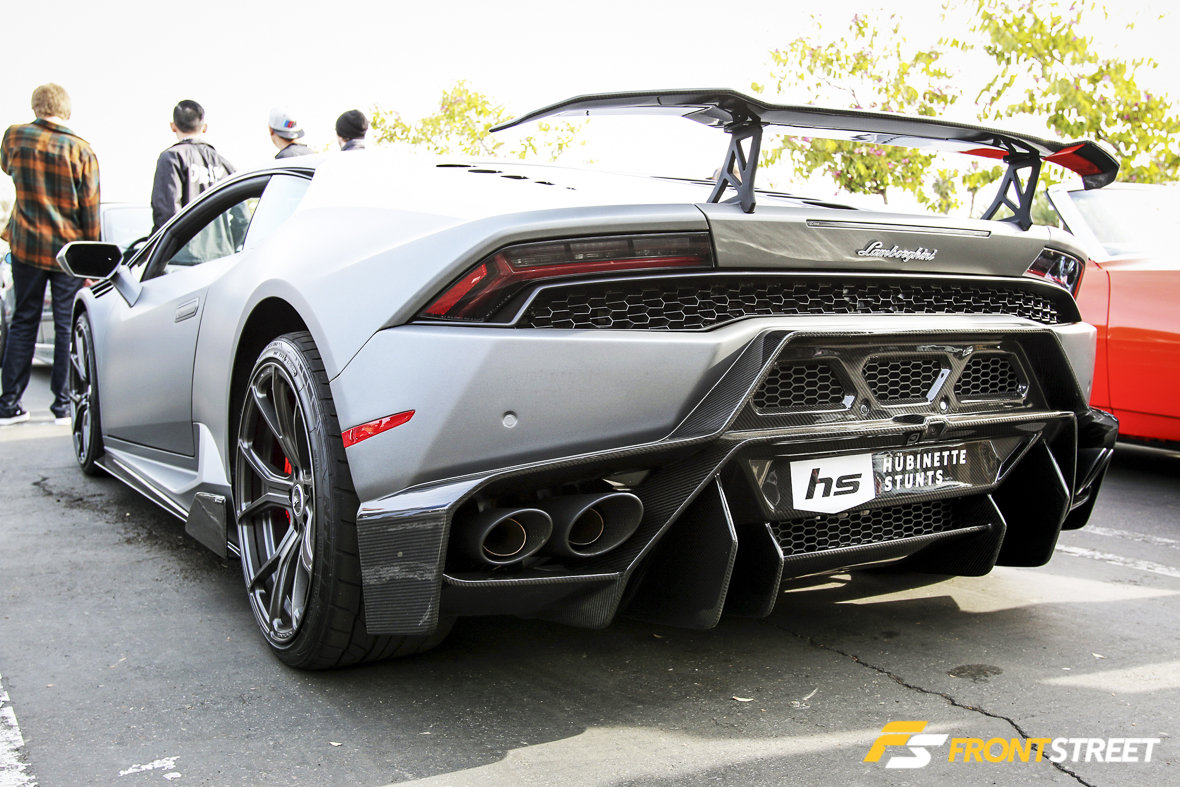
Could this be a Samuel Hübinette, a.k.a. The Crazy Swede sighting? Unfortunately, the 2-time Formula Drift series Champion was nowhere to be seen but we caught glimpse of his Lamborghini Newport Beach Huracán representing the Hübinette Stunts decals. The Lambo has already gone through a number of modifications including a Vorsteiner Novara Edizone Aero Package, GMG Racing exhaust and a hydraulic e-brake which allows this supercar to slide sideways for some tire shredding drifts.
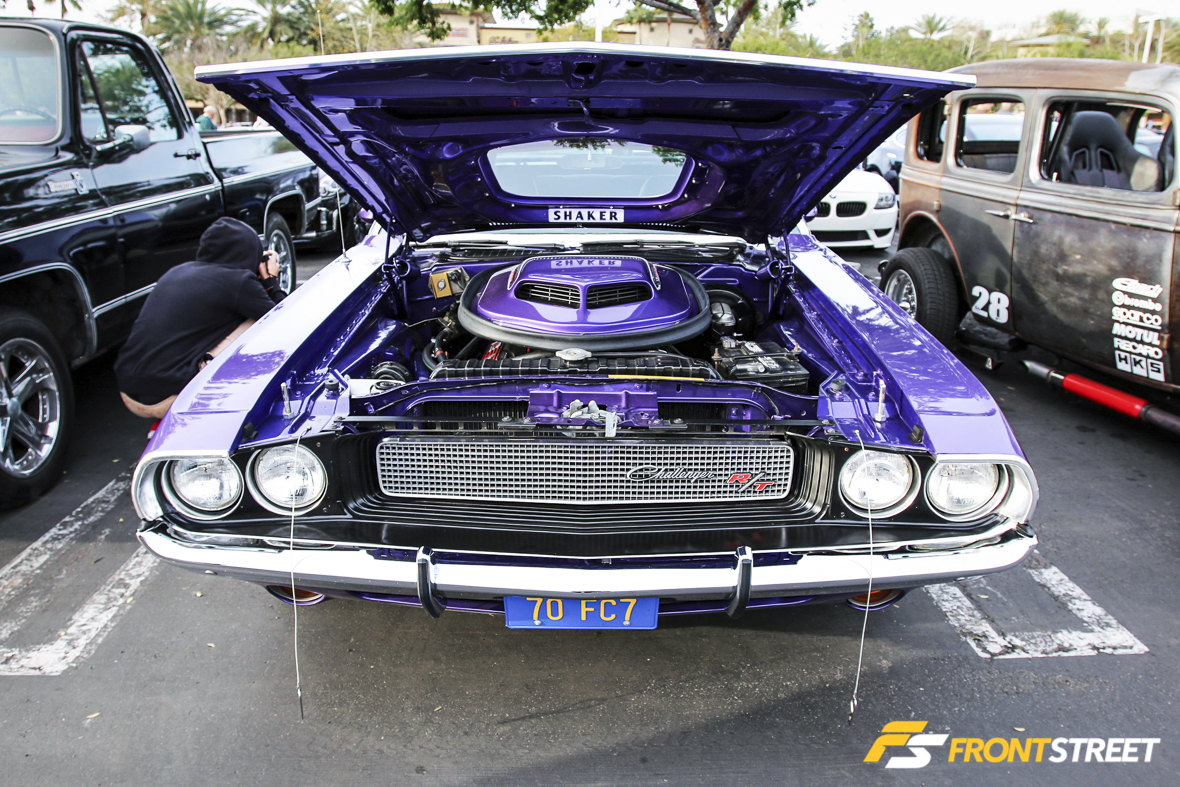
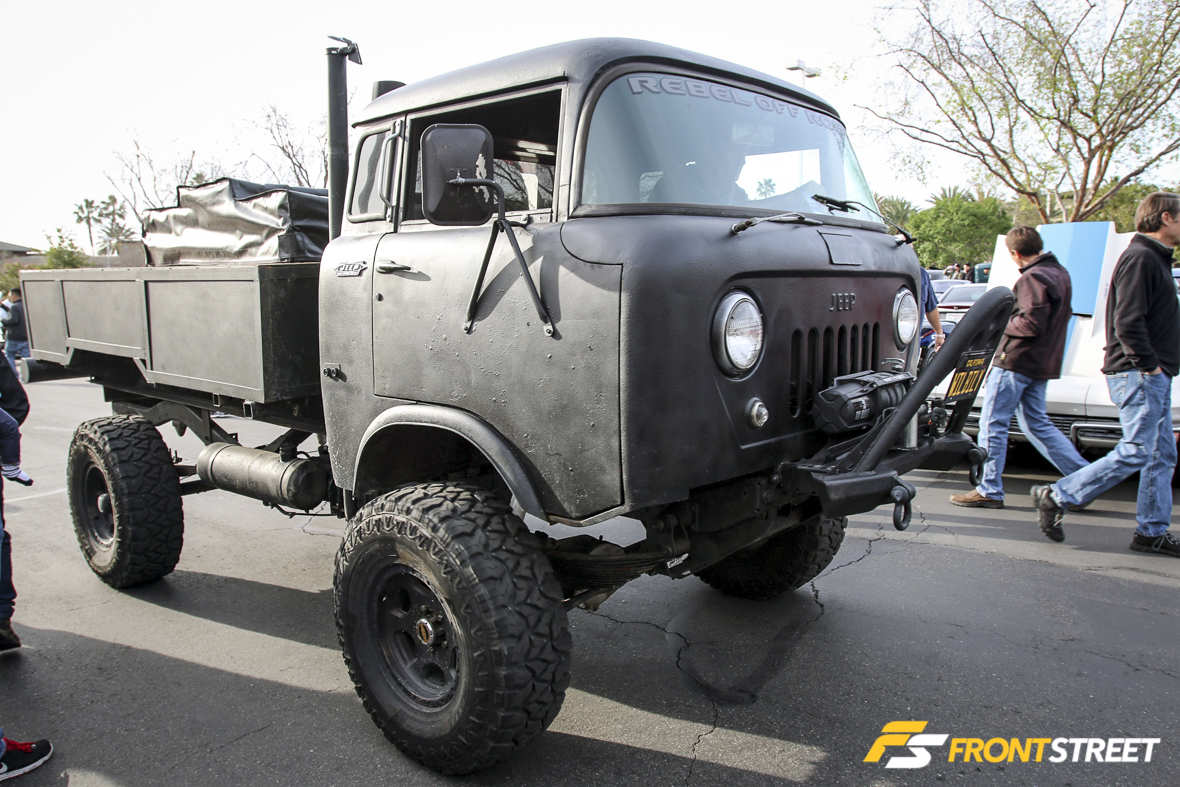
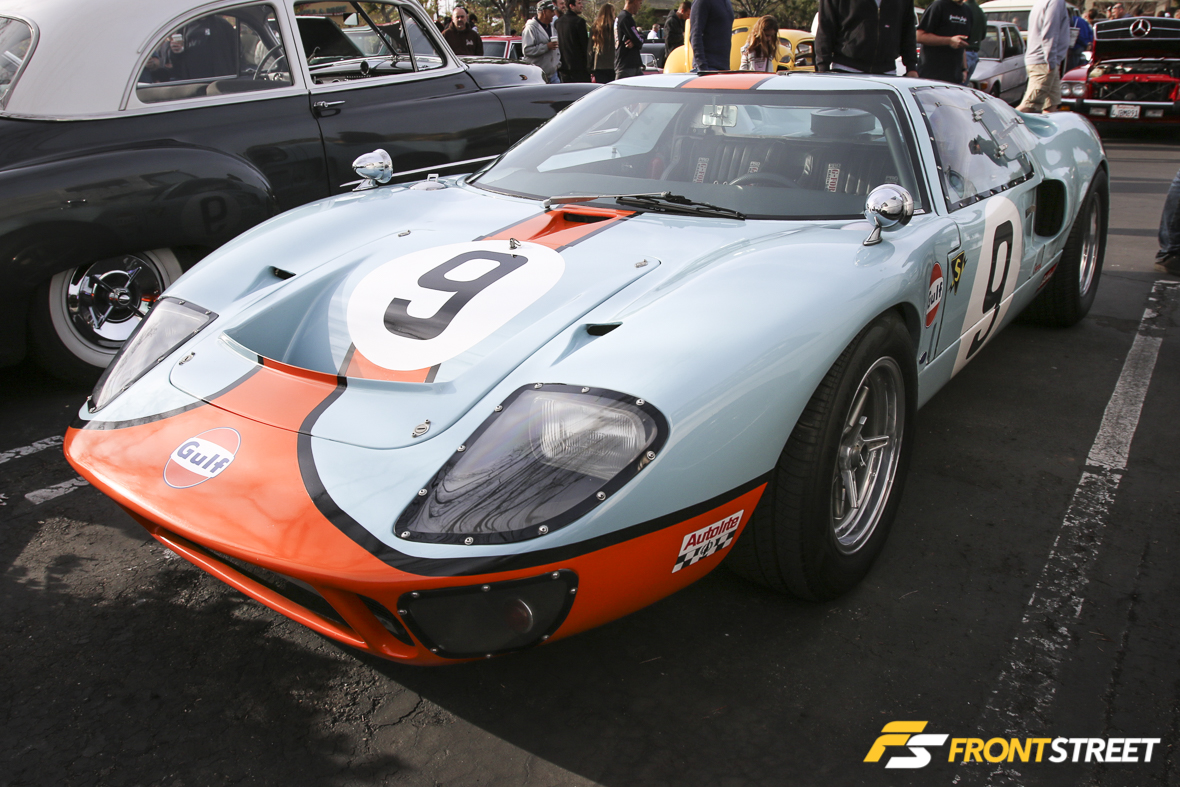
If you’re in the local SoCal area, and you’ve never been to Cars & Coffee Aliso Viejo, I highly suggest you go check it out. Gatherings are generally held every Saturday of each month from 7:00AM to 9:00AM. For updated weekly information including official info and event news, visit their Facebook page.













